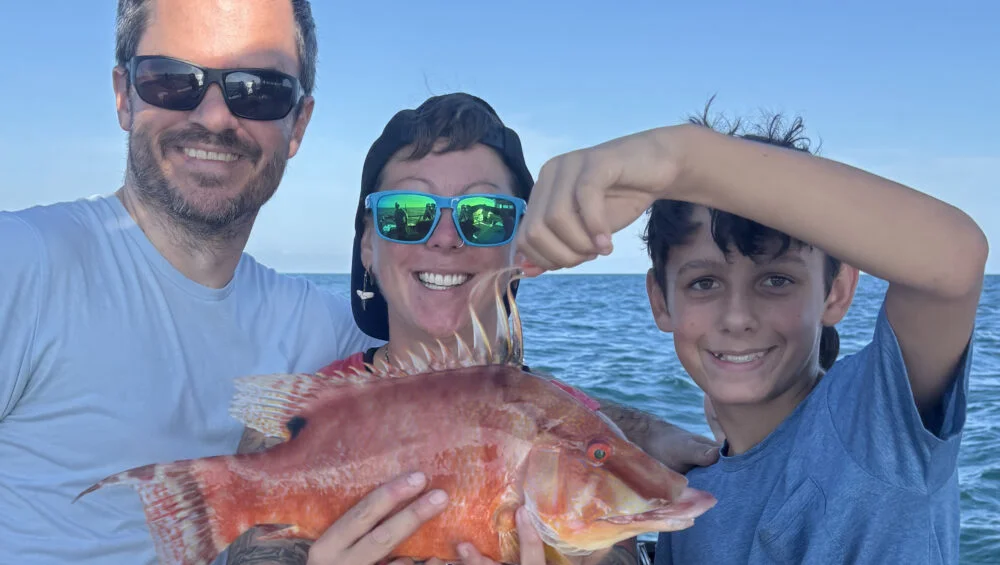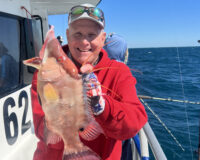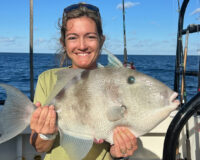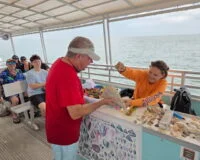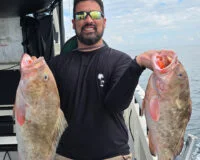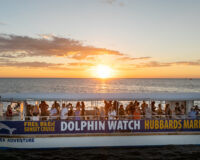Inshore Fishing Report
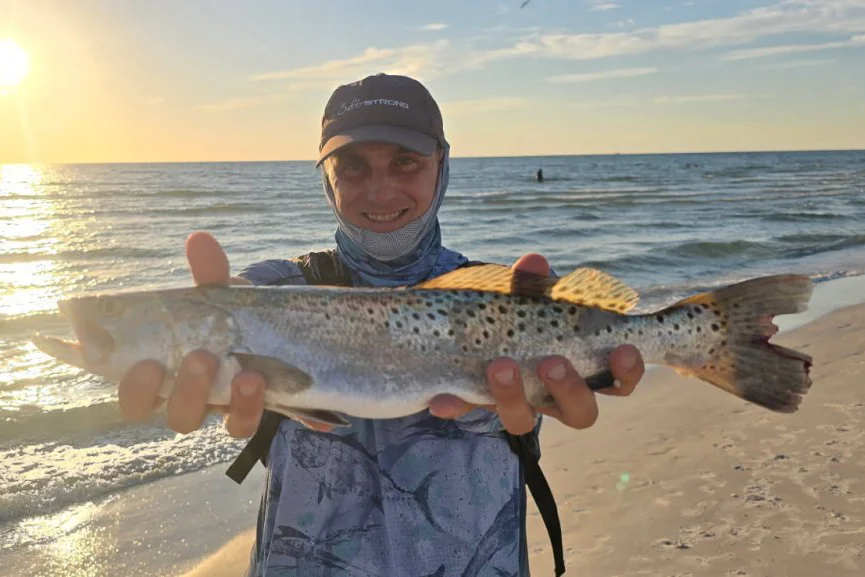
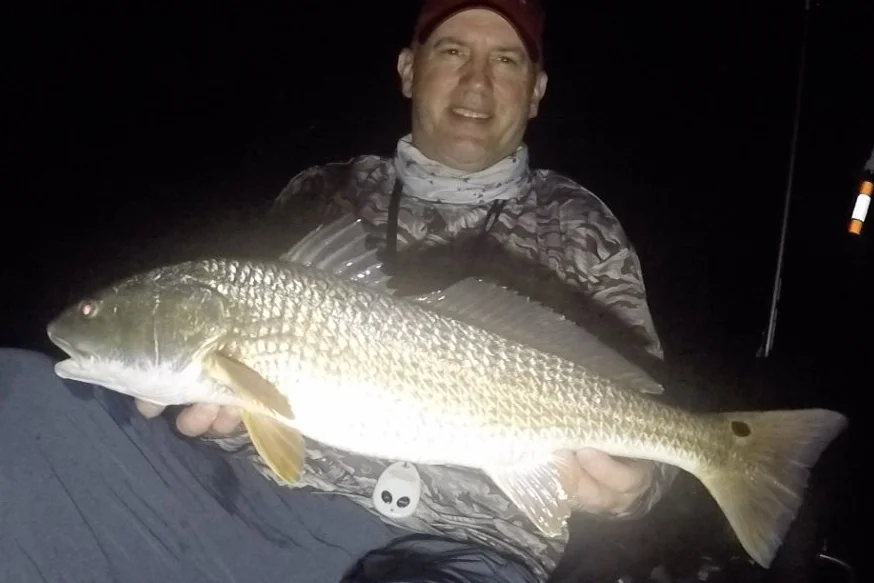
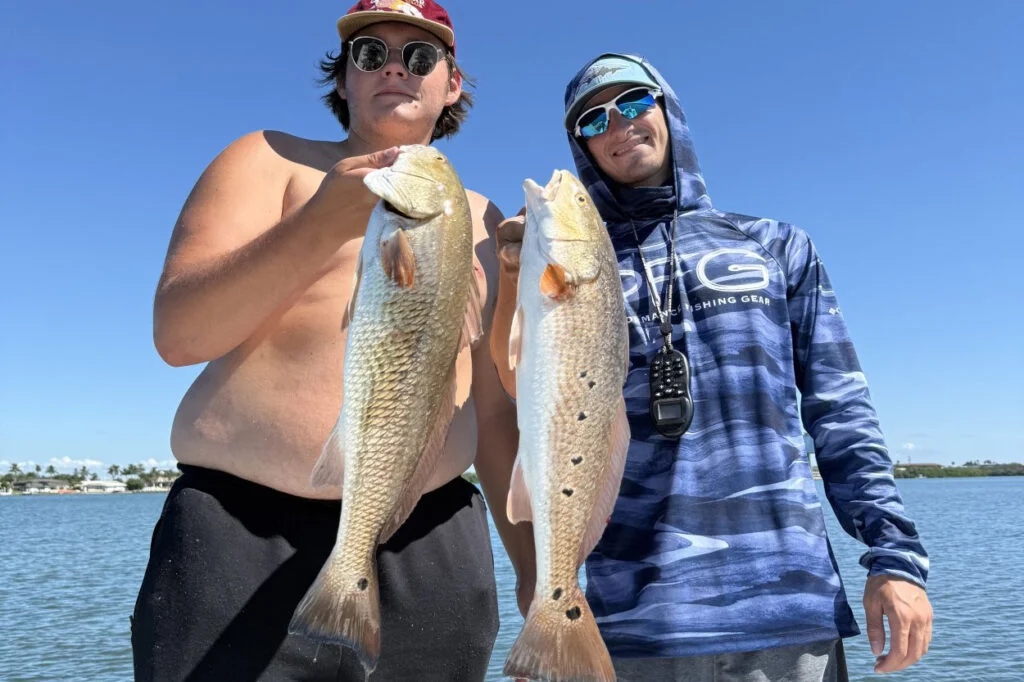
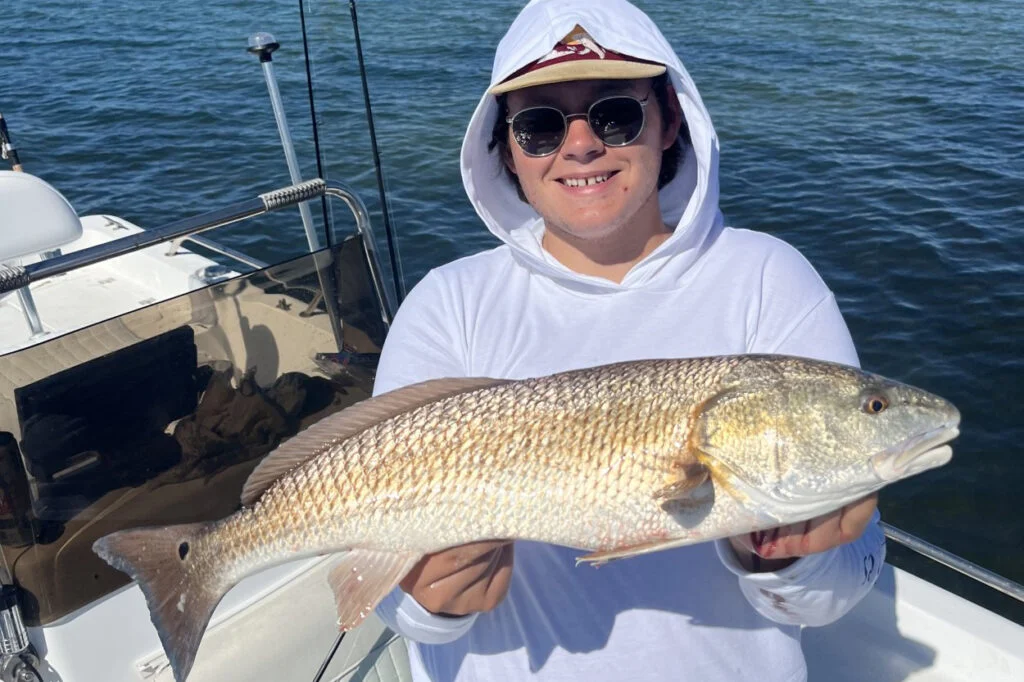
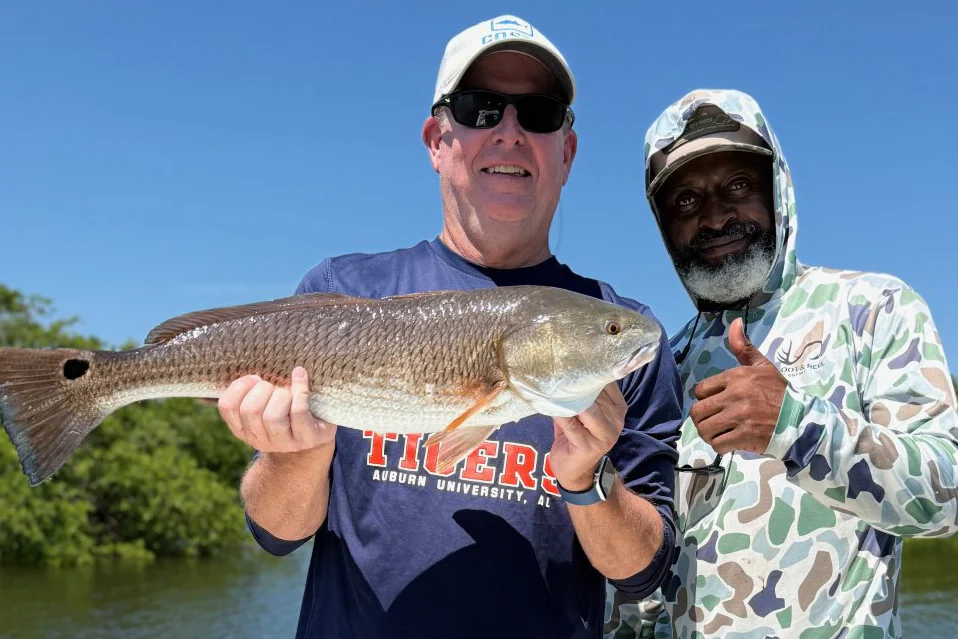
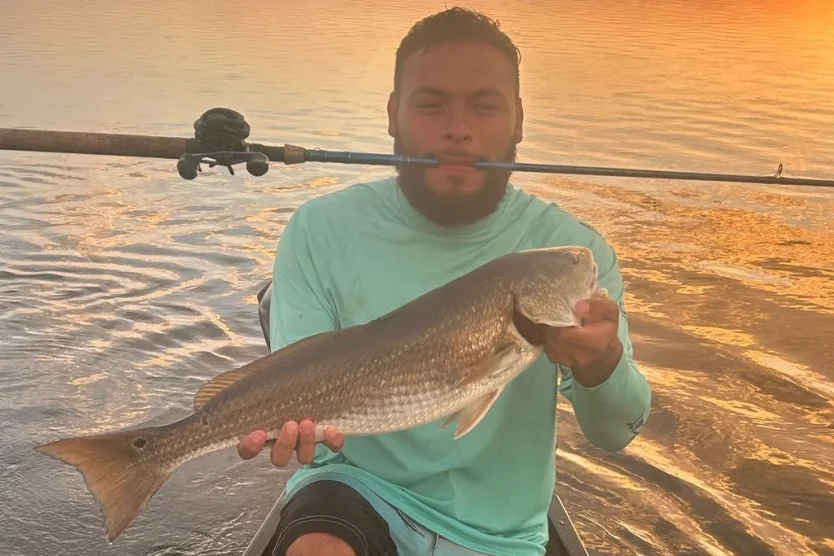
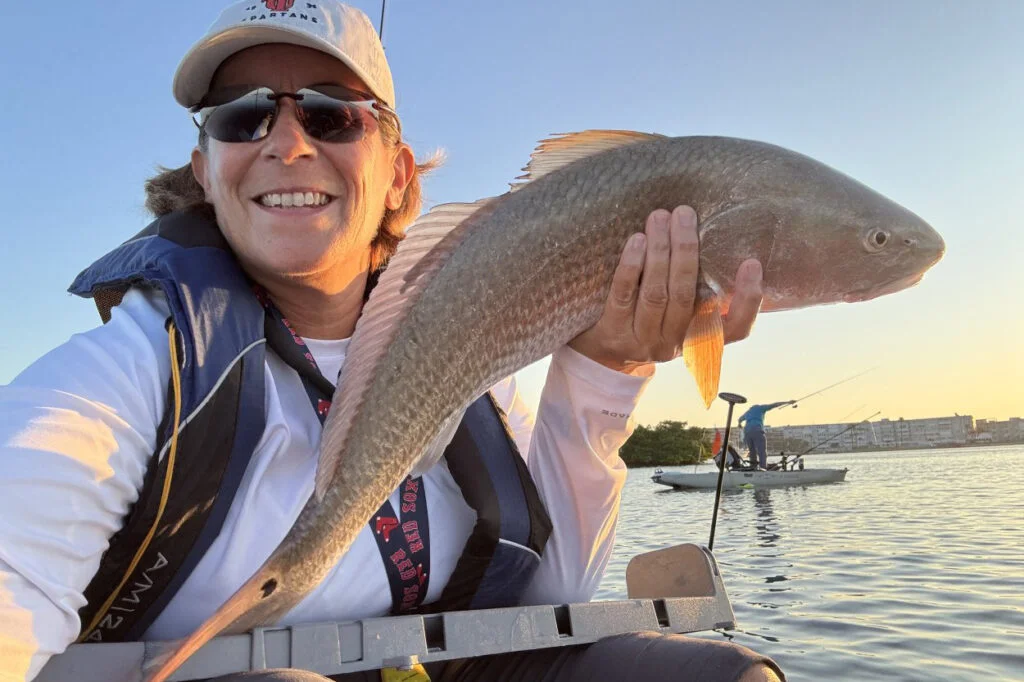
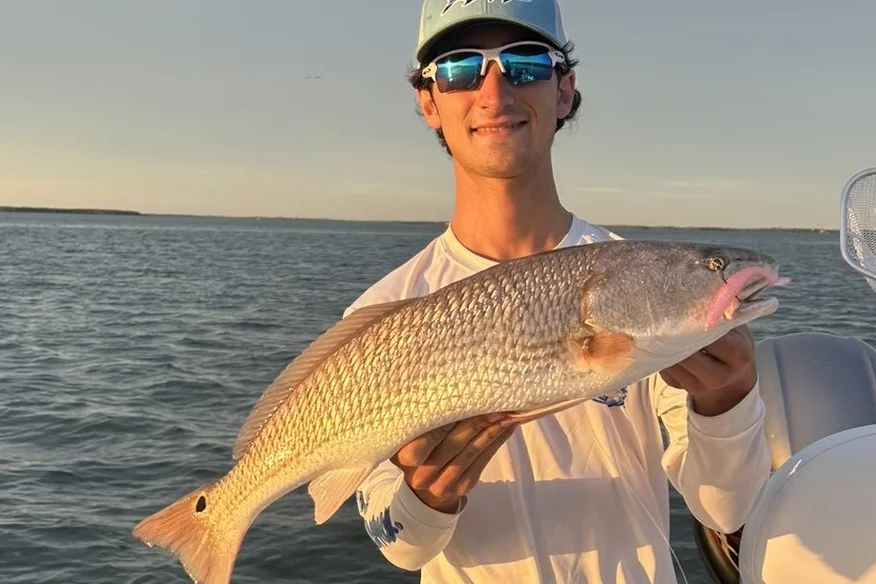
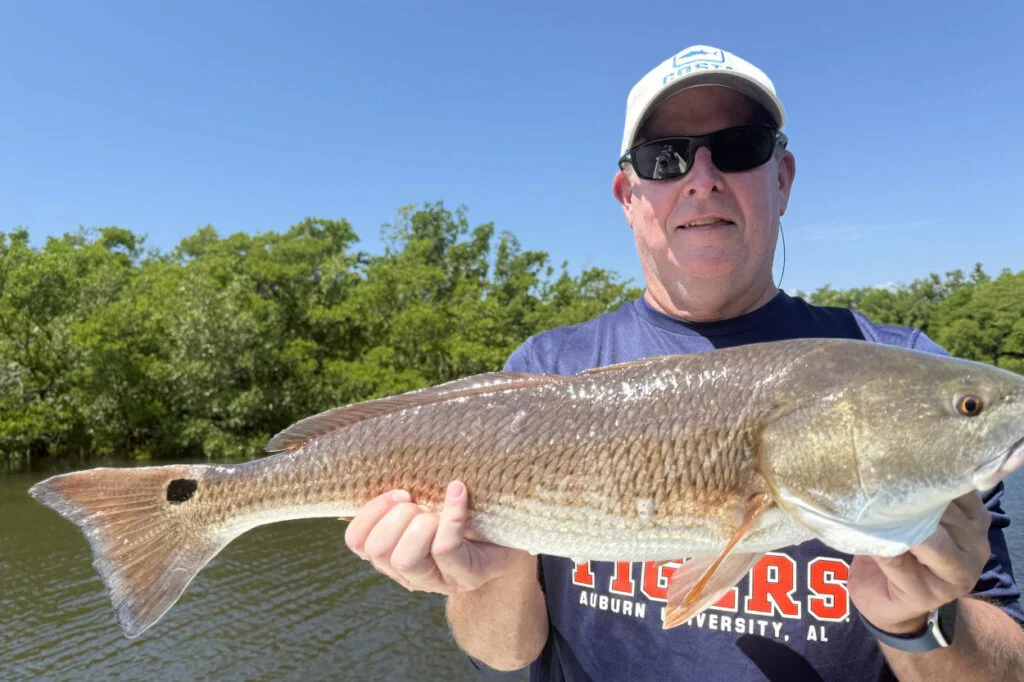
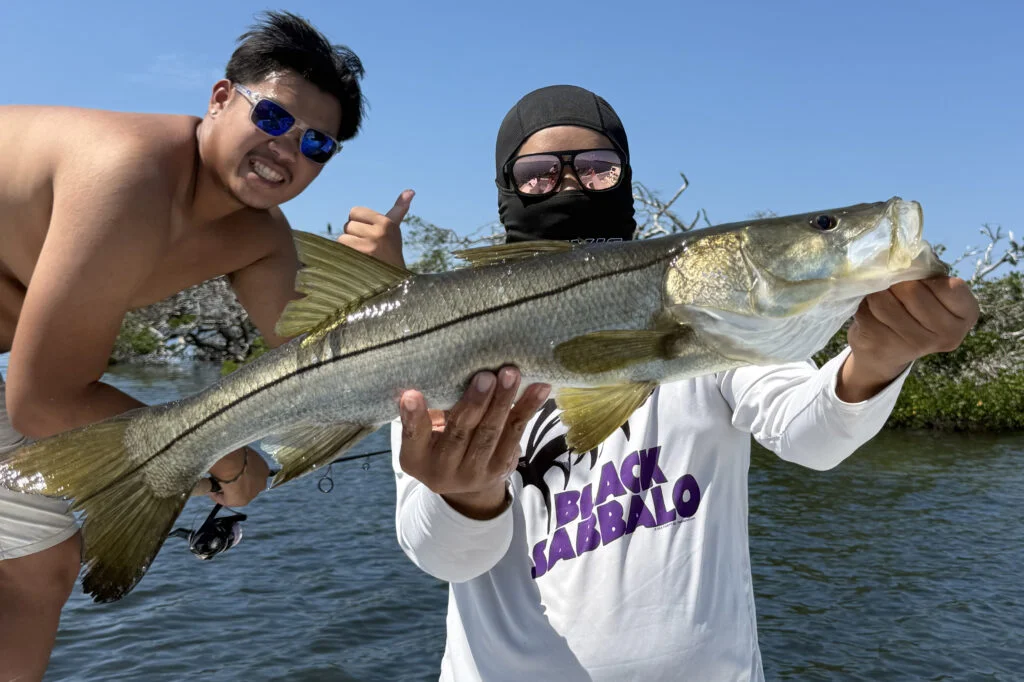
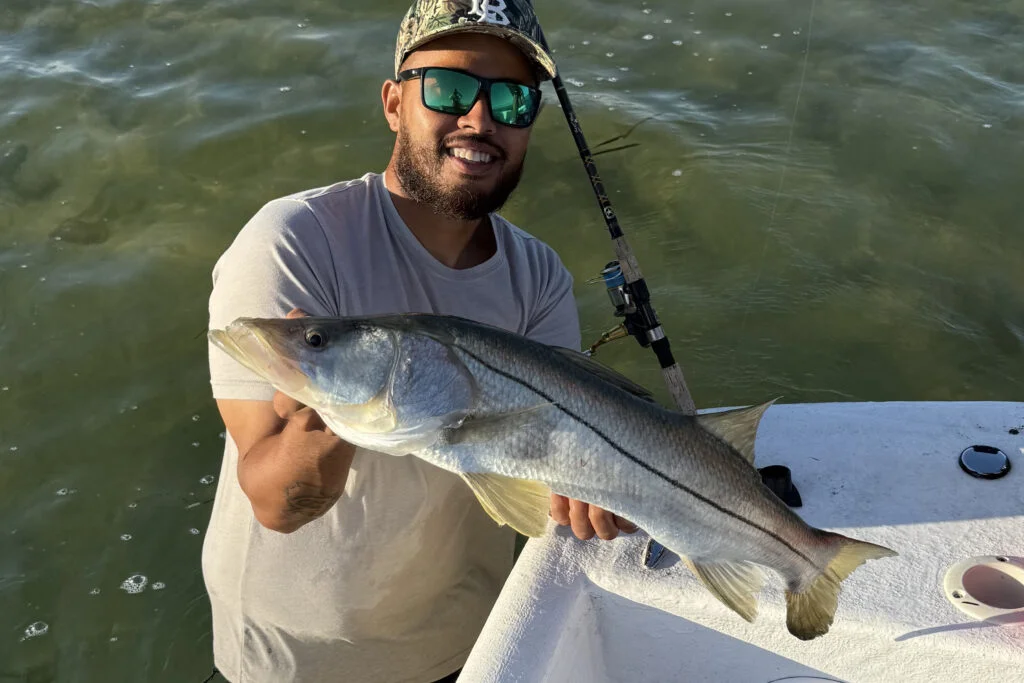
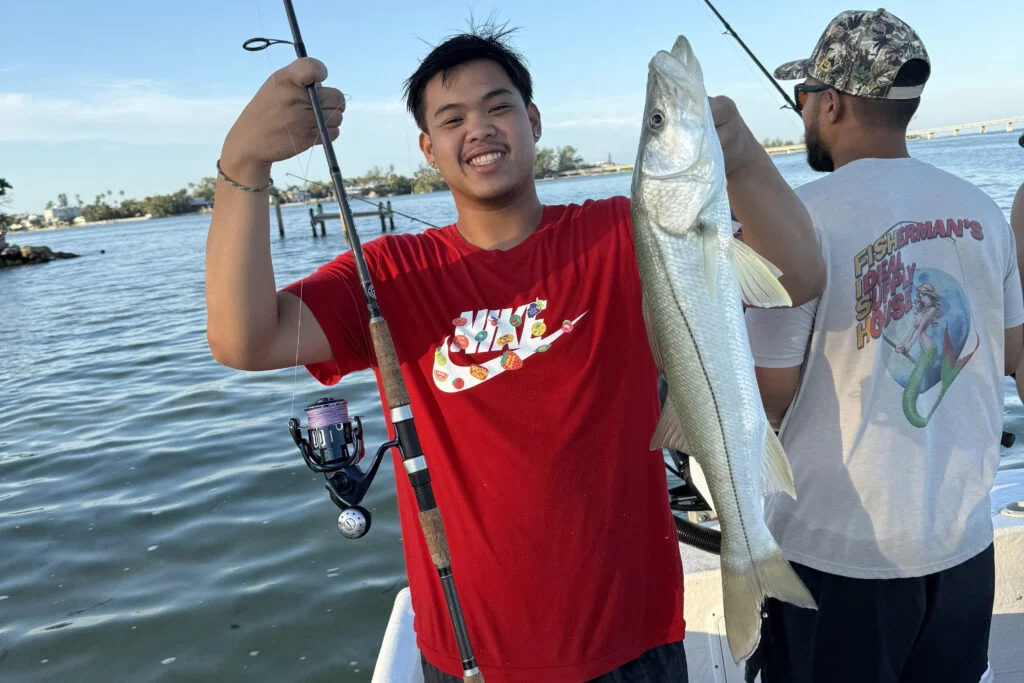
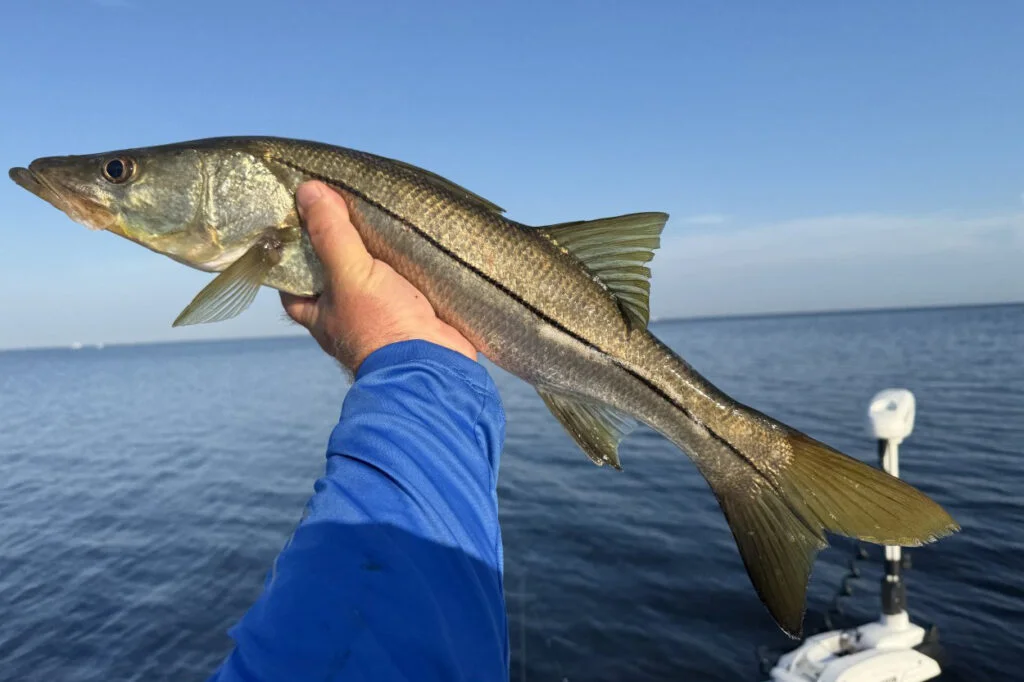
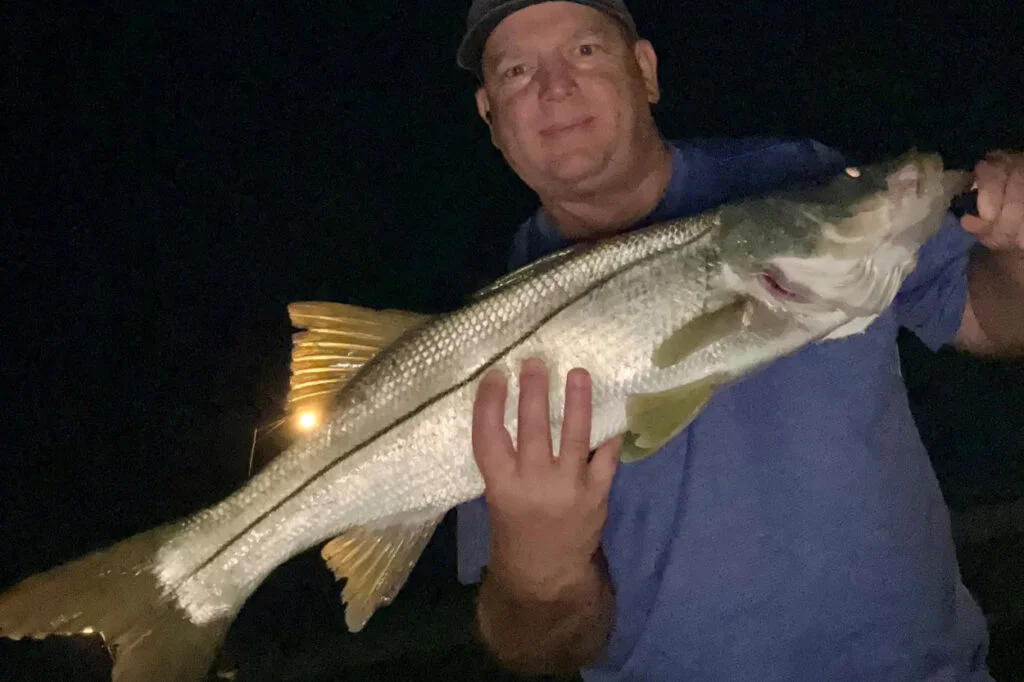
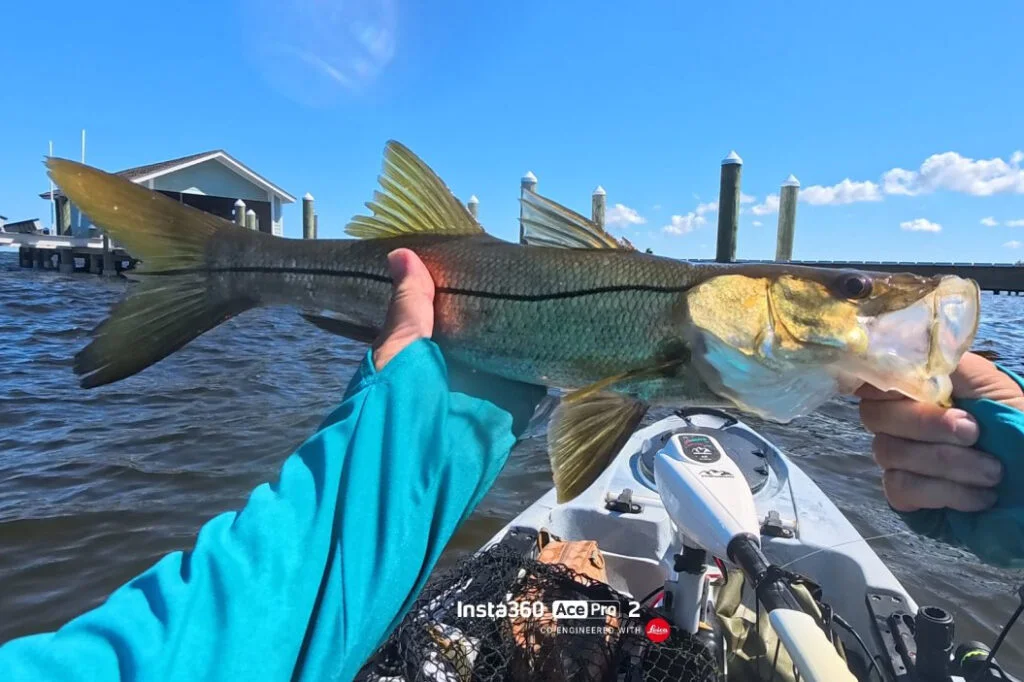
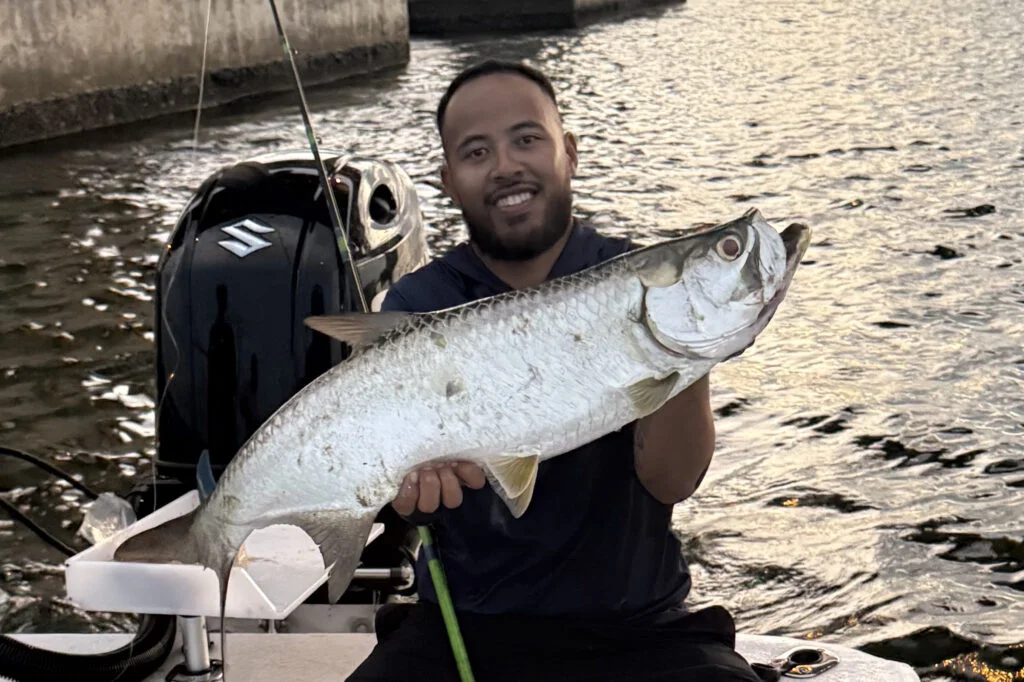
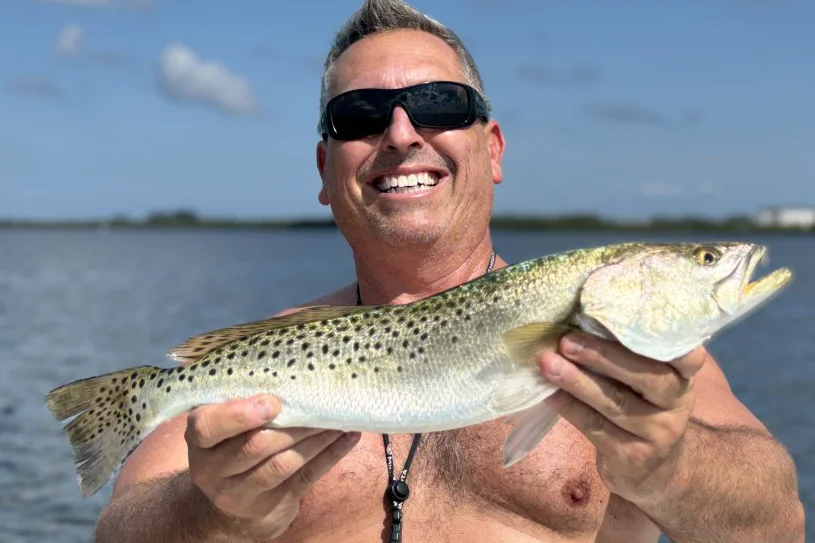
Snook action still continuing to be impressive along the beaches and in the passes. However, we were seeing a shift of that action to the back bays with the cooler weather but now that its warmed back up it will be interesting to see how the fish react the next few days. Either way, we should still have a few more weeks of beach and pass snook action before the fish completely retreat. The redfish action has been solid inshore lately as they start to really get concentrated up on the flats, oyster bars, and around the mangroves. Look for the big fat jumping mullet, birds or bait. Action will concentrate them and give them away too. Often you will find bluefish or jack crevalle schooling up with the redfish too this time of year. Trout action was already starting to slide up shallower with the cooler mornings, but the last few days warming trend may slow that shift. We have been seeing them solidly around the edges and deeper flats around 4-6ft. Also, at night the trout action has been solid around dock lights and bridge lights. Mangrove snapper action has been thick around the docks, piers, bridges and jetties. Already seeing some nice numbers of sheepshead sliding into those areas too!
Fishing Tips
- Snook: Use live baits like greenbacks, threadfins, and shrimp, or try flair hawks and soft plastics at night.
- Redfish: Look for them around mangroves, oyster bars, and flats, and use dead baits during higher tides.
- Trout: Target them with soft plastics, white bait, and shrimp around deeper flats and potholes.
- Tarpon: Target them during the full moon with crab flushes, making it an ideal time to target them.
- Flounder: Find them near sandy bottoms and structures, biting on bottom baits.
- Pompano: Be prepared to move frequently to stay on their bite.
- Sharks: Use big dead baits in areas with moving water.
Help spread the word about what to do if you hook or entangle a bird. Never cut the line; instead, reel in the bird carefully to dehook and release it. If you accidentally hook a dock, break the line at the hook to avoid leaving any line in the water. Seabirds with fishing lines hanging from them are becoming more common, and this could lead to the closure of fishing areas.
Rising concerns about bird entanglements might result in closing fishing spots, impacting the few available locations around Tampa Bay from shorelines, docks, bridges, or piers. Learn more in our recent podcast with Salt Strong: https://www.saltstrong.com/articles/shutting-down-fishing-at-busy-pier/.
NEarshore Fishing Report
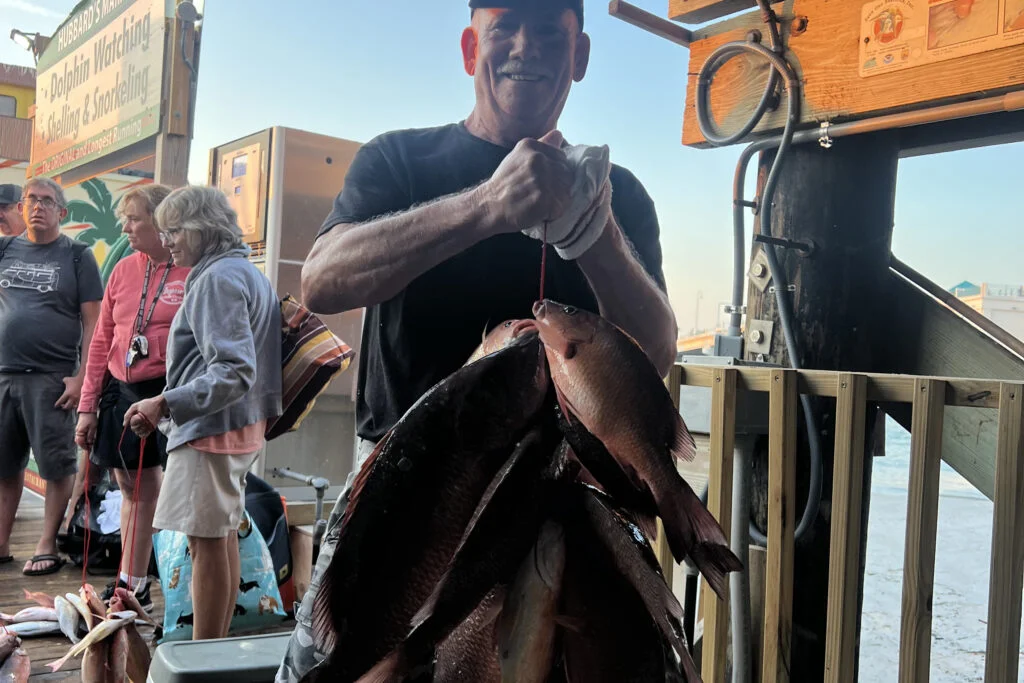
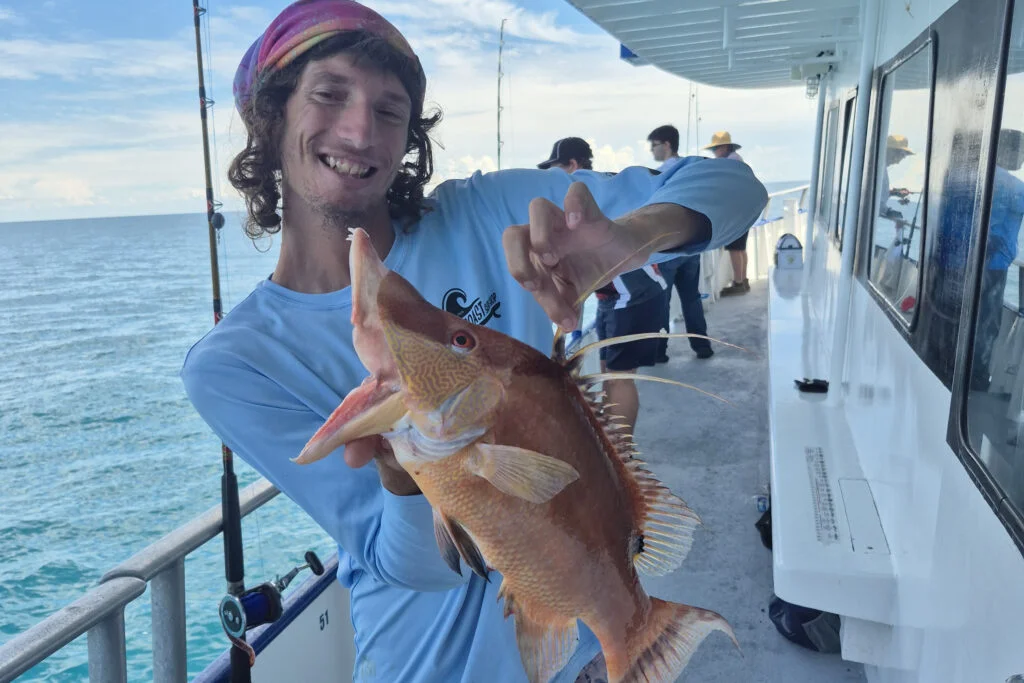
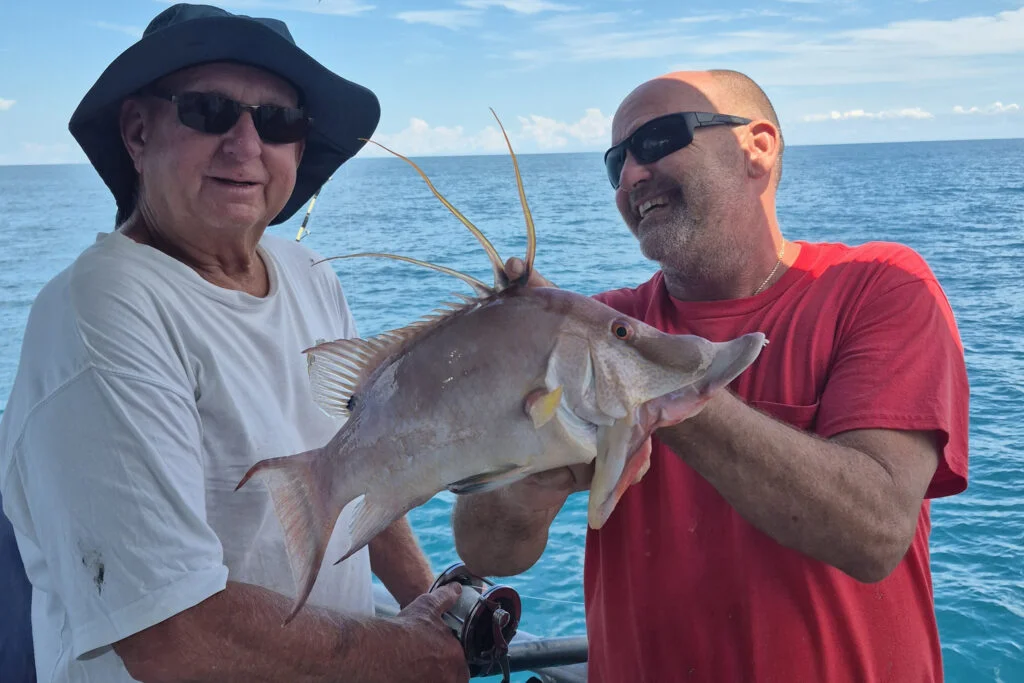
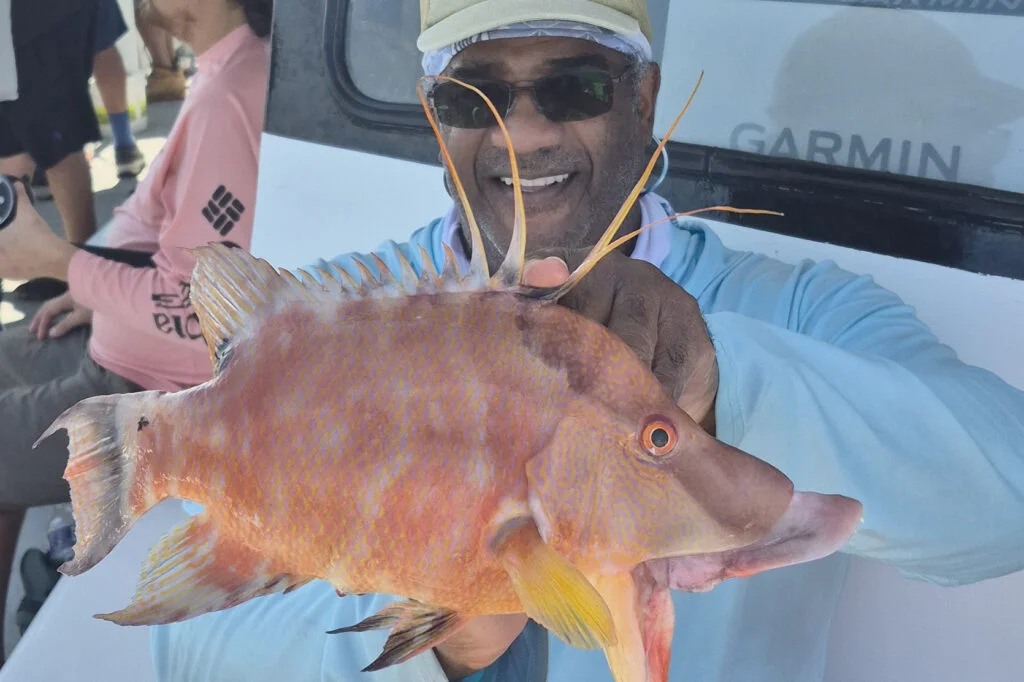
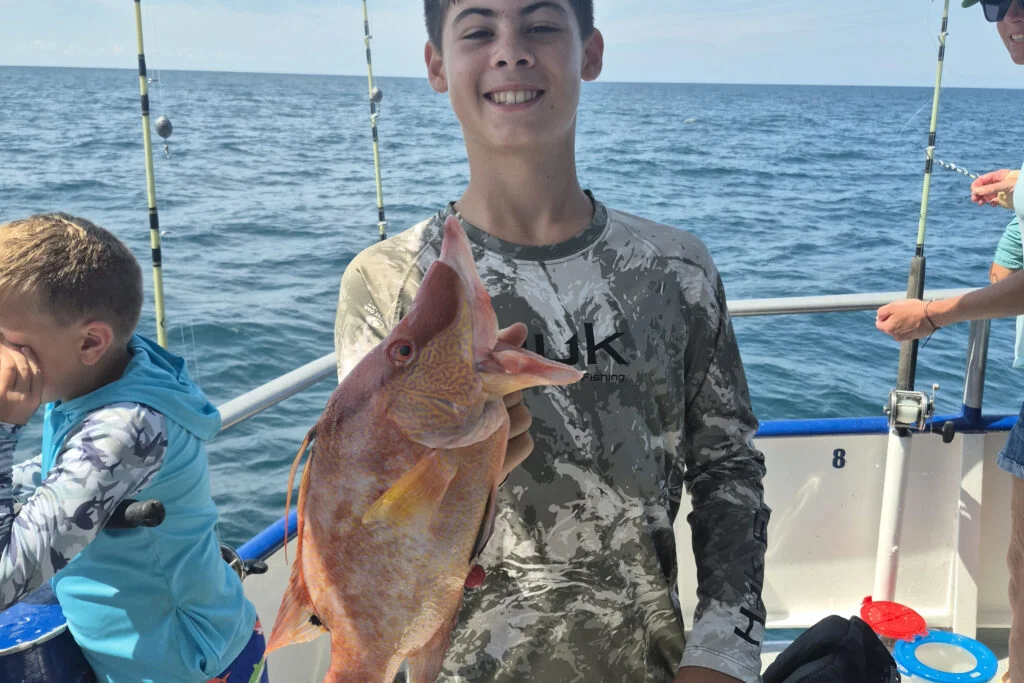
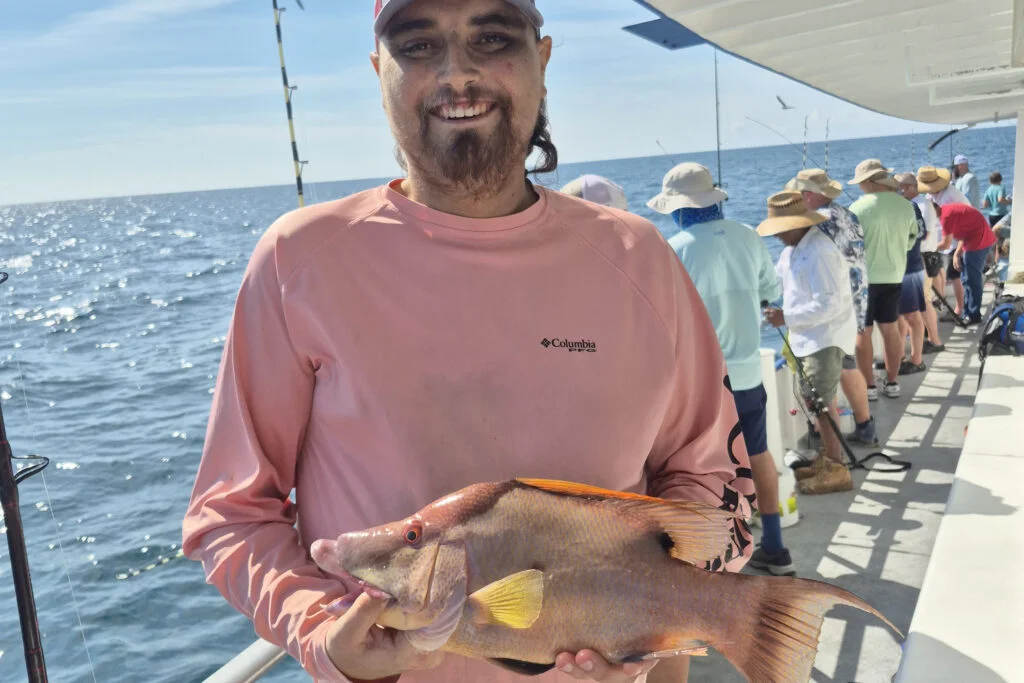
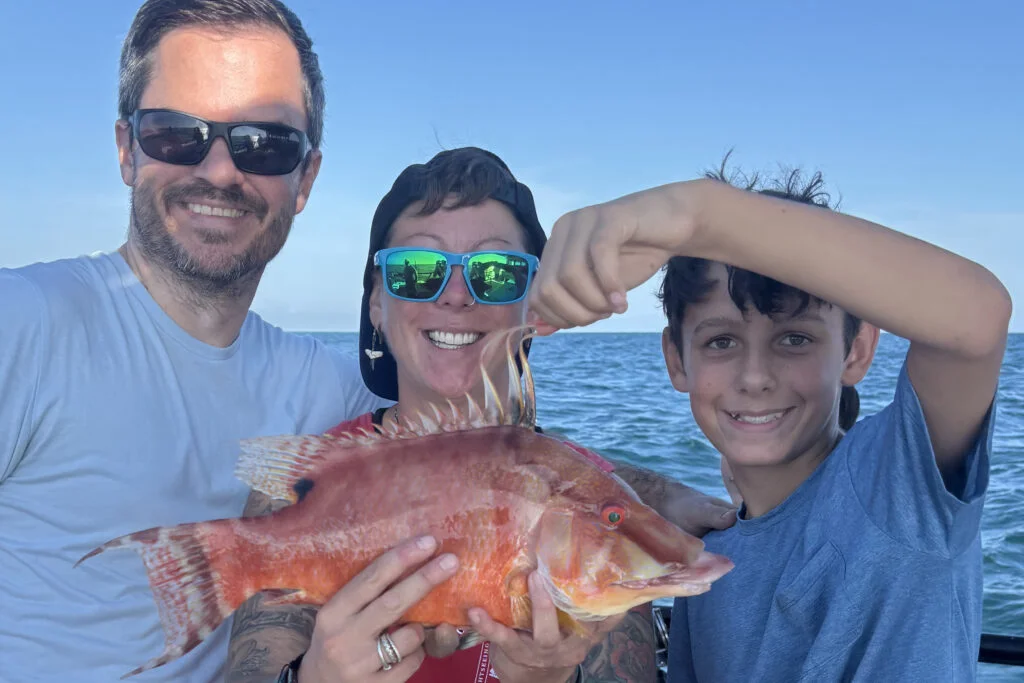
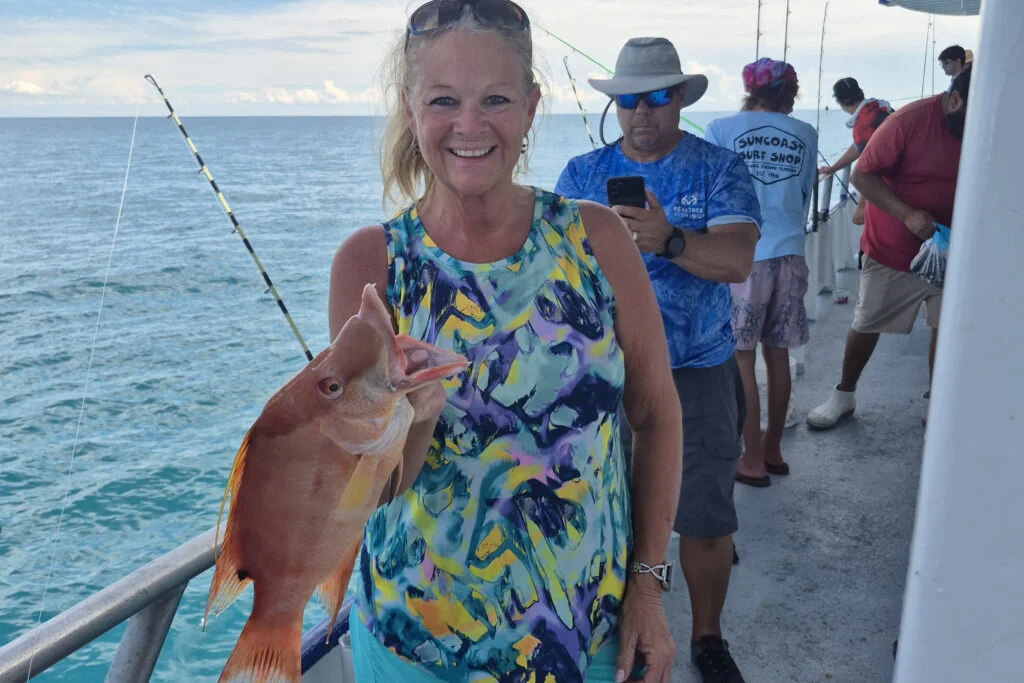
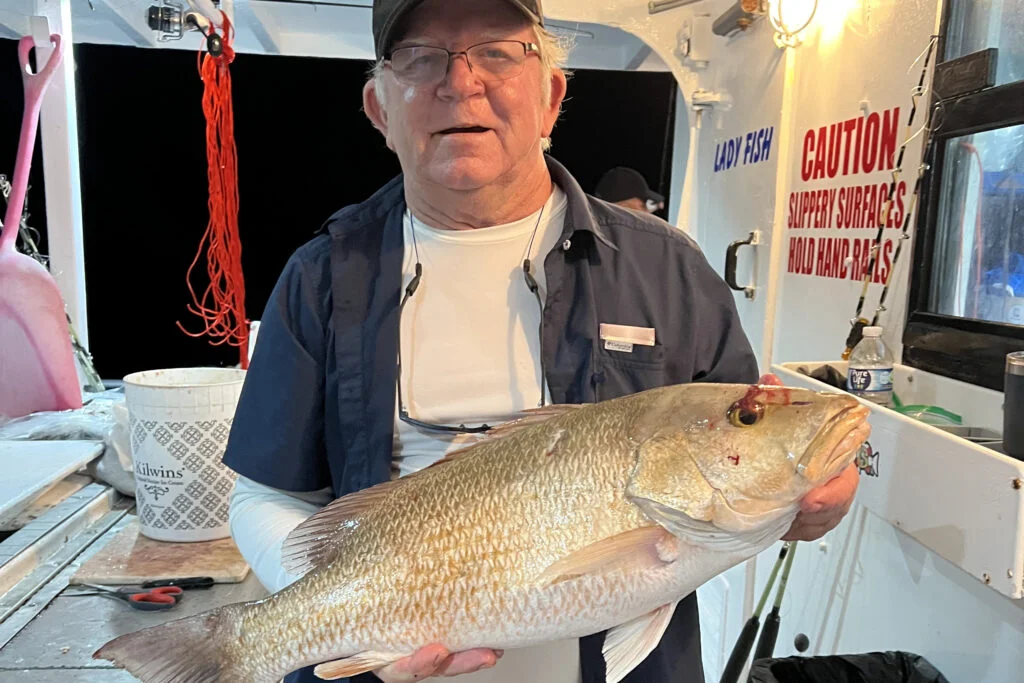
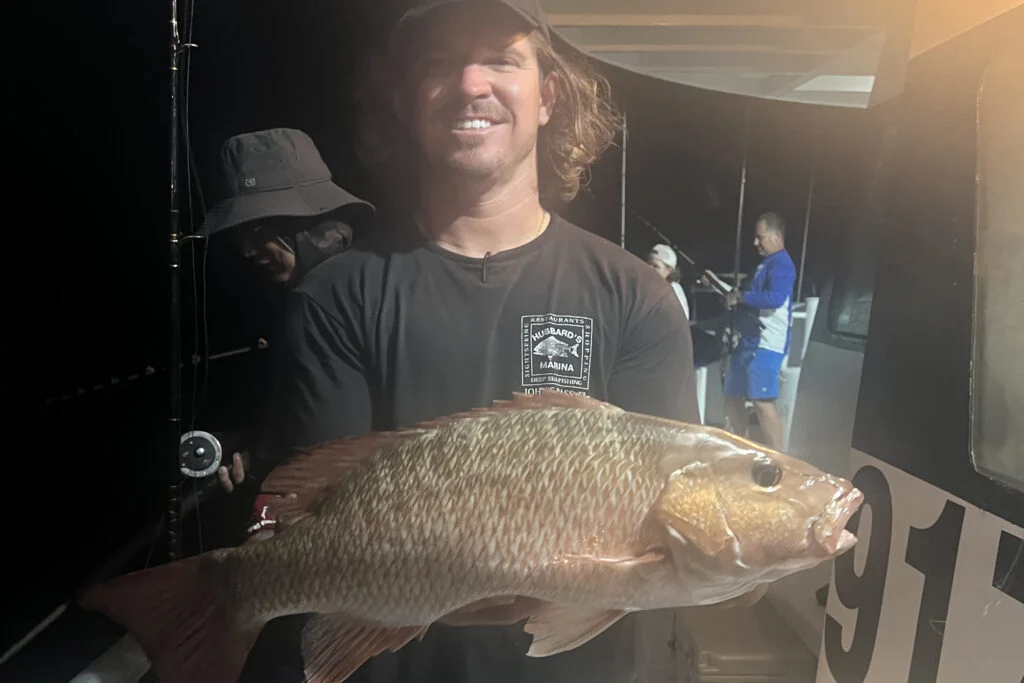
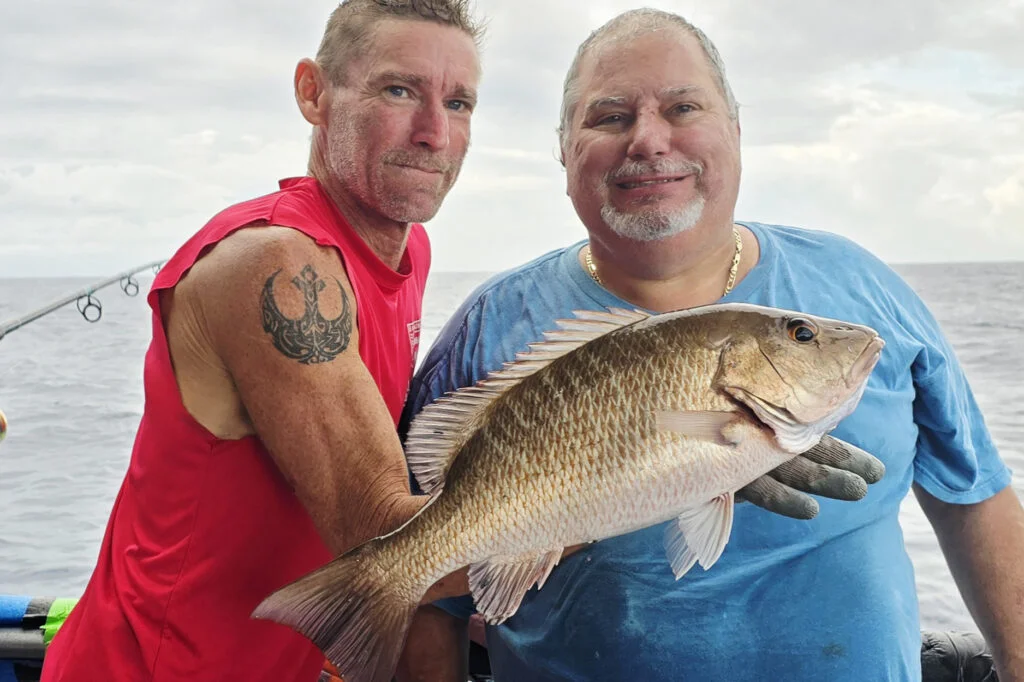
Near shore fishing around Hubbard’s Marina is shaping up nicely as we move into the cooler months. Hogfish are beginning to make a stronger showing, and we’re already seeing a few landed on our 10-hour all-day trips. With the arrival of cold fronts, we expect that action to build quickly as these prized fish school up on the near shore structures. Lane snapper have been steady and consistent, and we anticipate that bite to remain productive in the coming weeks.
Mangrove snapper have been a bit more hit-or-miss lately, but anglers working the deeper near shore waters are still finding solid catches overall. The seasonal shift will bring in larger live shrimp, which should give us an edge when targeting both hogfish and mangroves, compared to the smaller summer shrimp. Red grouper have been a little soft closer in, though those willing to push into the deeper stretches of our near shore grounds still have a chance to pick off one or two.
All in all, the near shore bite is improving with the changing conditions, and as water temperatures continue to drop, we’re looking forward to even stronger opportunities for hogfish, mangroves, and a variety of other species.
Fishing Tips
- Red Grouper: Target the deepest near shore waters with big dead baits or solid live baits. Use 60 lb test and 7/0 hooks for best results.
- Red Snapper: Use big dead baits like whole squid and bonita strips with heavy tackle to focus on larger fish. Prime trips include the 12-hour extreme, 39-hour, and 44-hour trips.
- Scamp Grouper: Use small to medium pinfish and cut threadfin, especially while targeting mangrove snapper.
- Mangrove Snapper: Near shore, use live shrimp and small chunks of threadfin on 30-40 lb test with 3-4/0 hooks. Offshore, use bigger chunks of cut threadfin or medium pinfish on 40-60 lb test with 5-7/0 hooks.
- Vermillion Snapper: Start around 100 feet of water using cut squid or threadfin. These fish are aggressive and not leader-shy.
- Yellowtail Snapper: Use shrimp, cut squid, and threadfin.
- Pelagic Species: Keep flat lines and pitch rods ready for sailfish, kingfish, wahoo, tuna, and mahi mahi.
Offshore Fishing Report
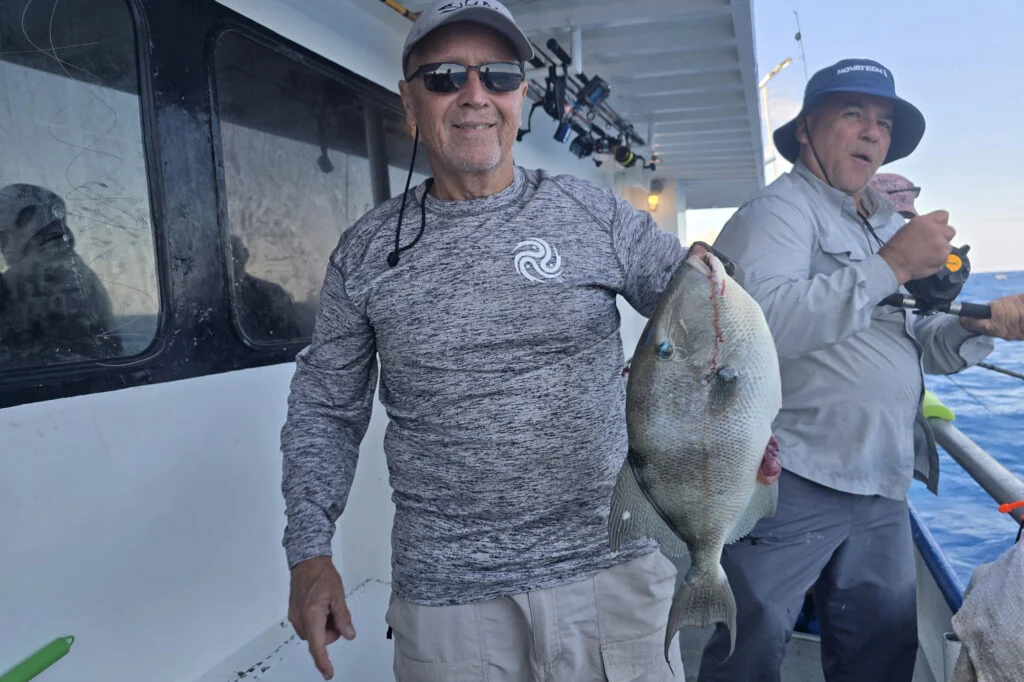
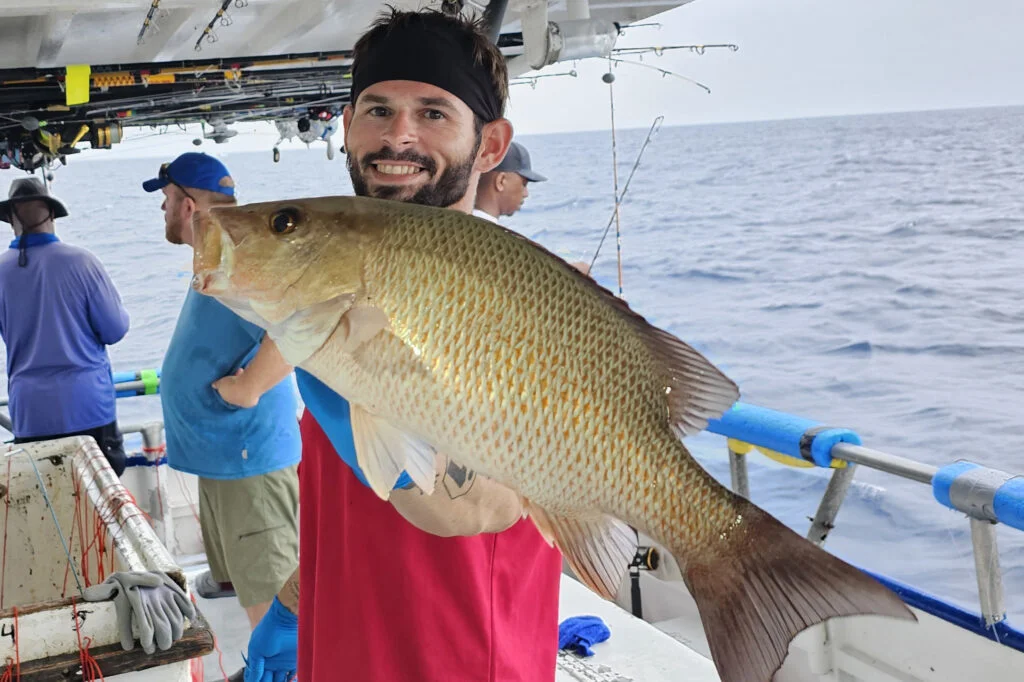
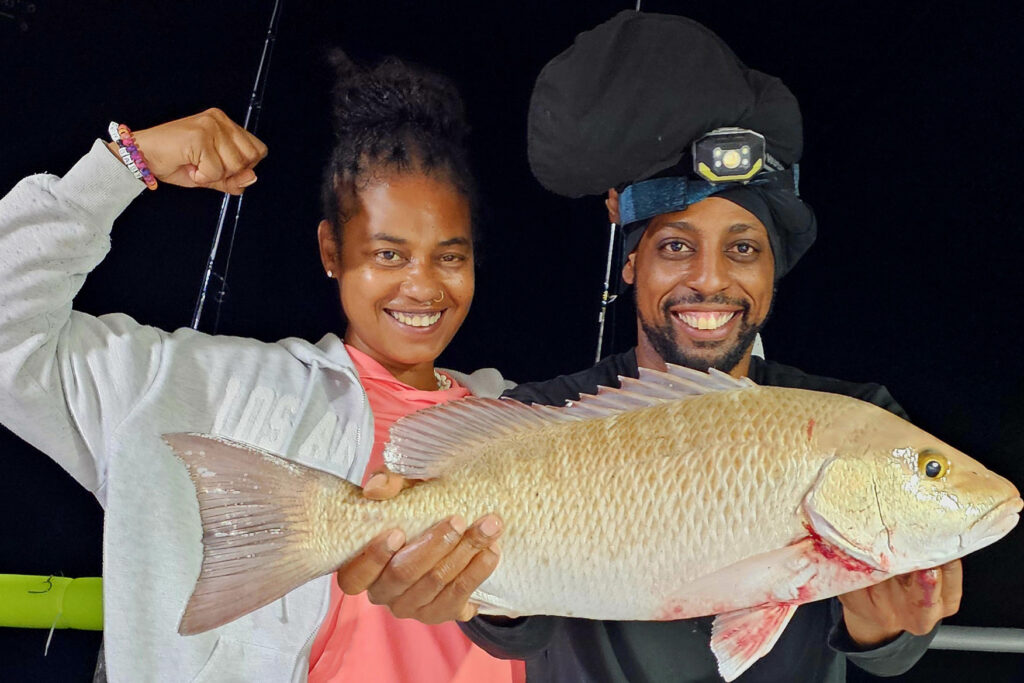
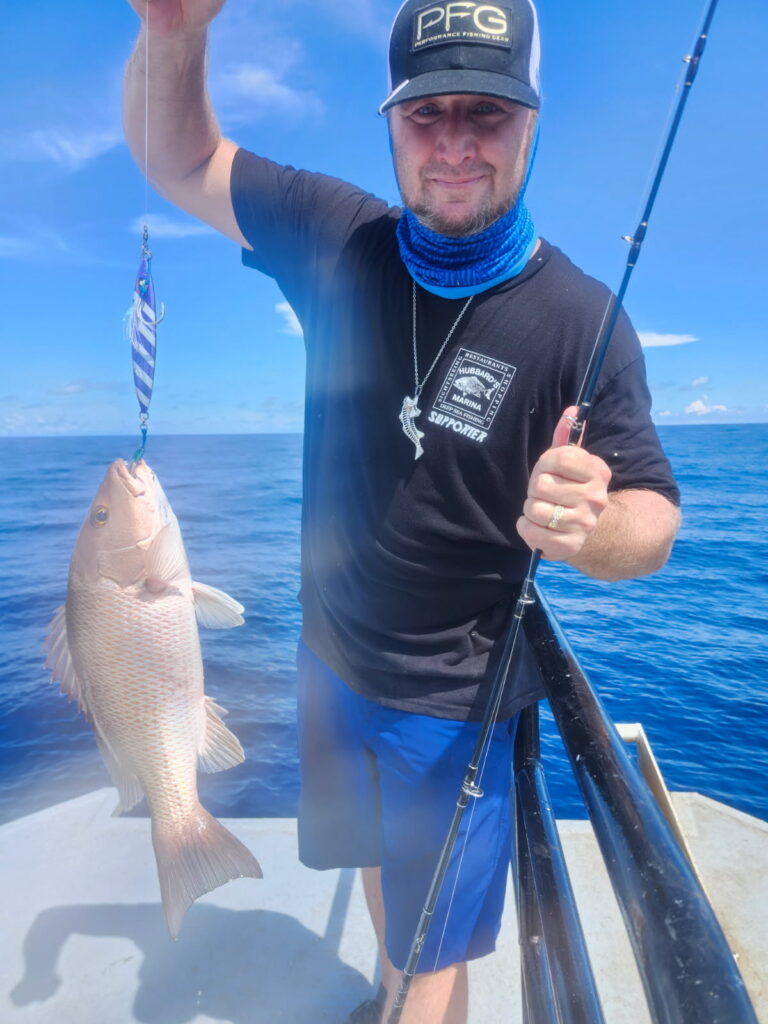
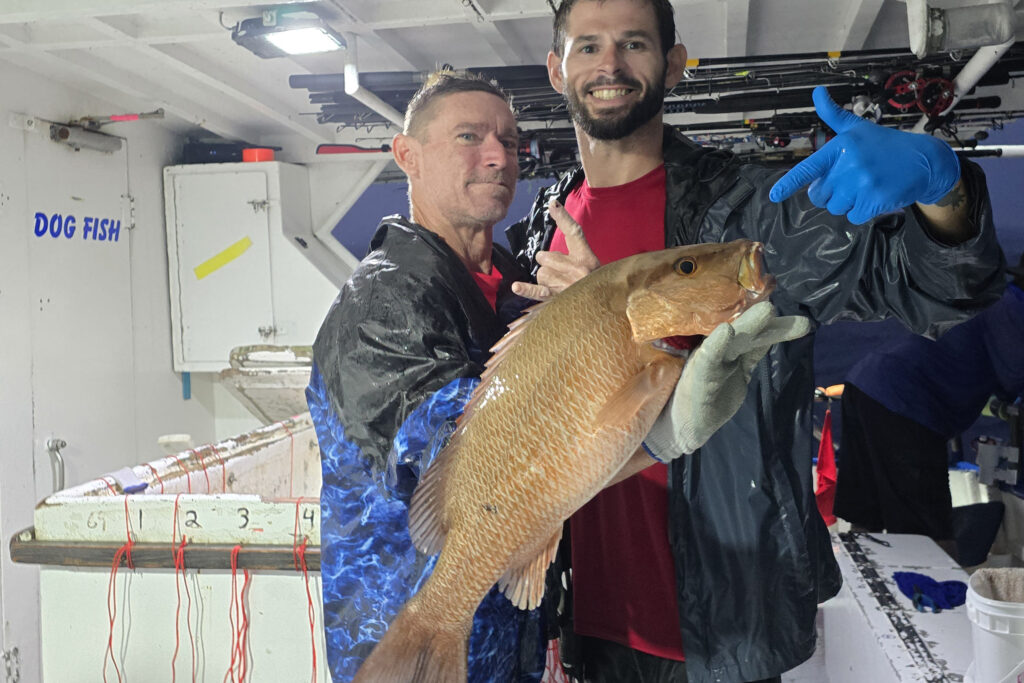
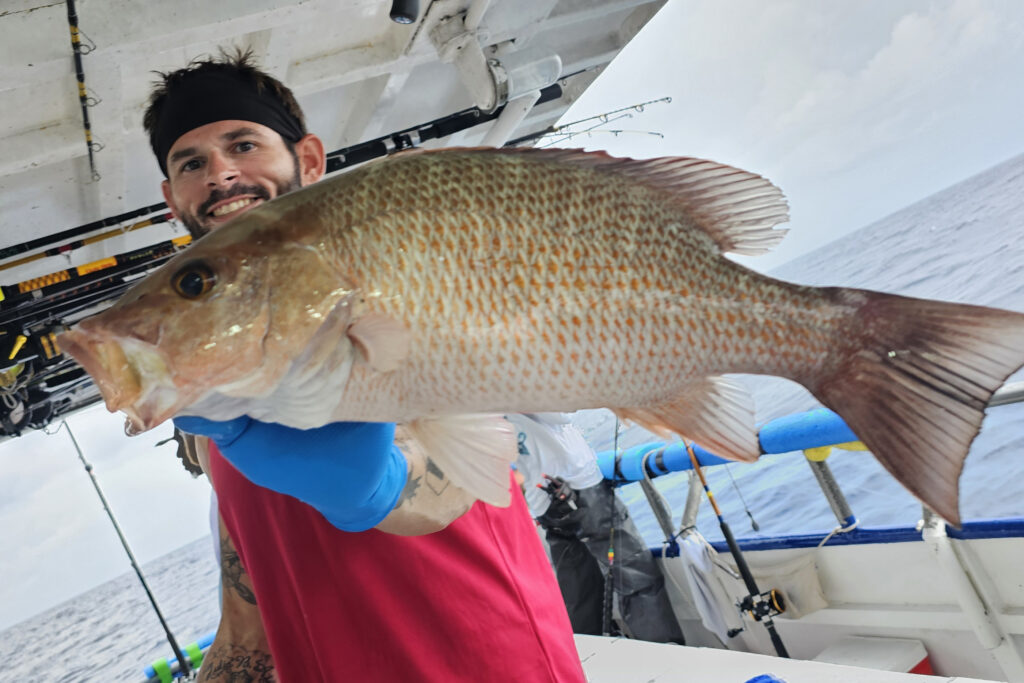
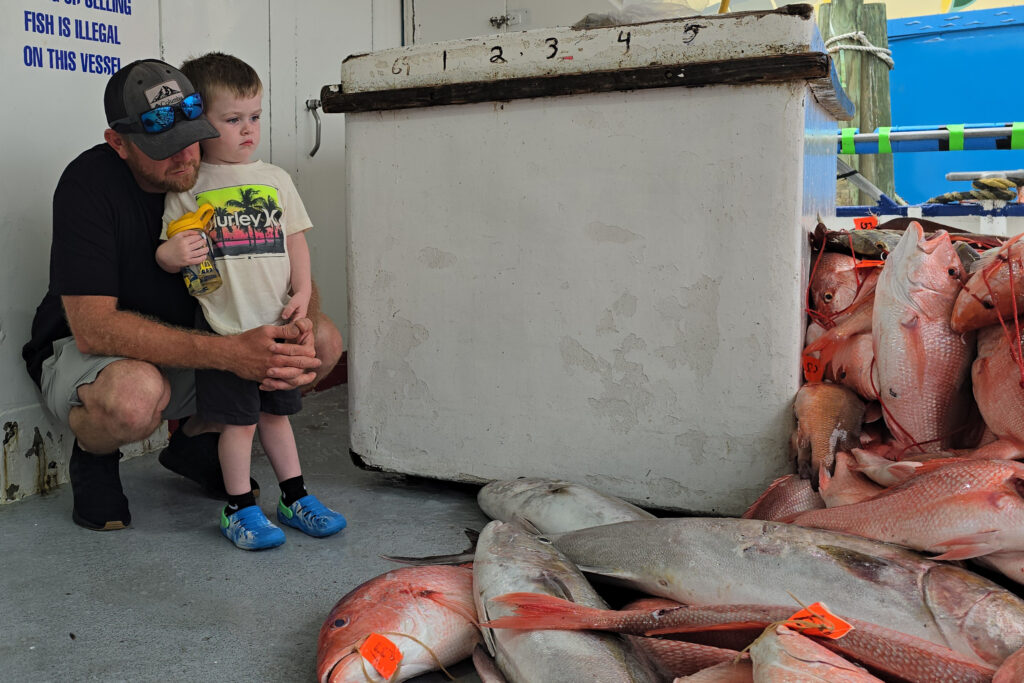
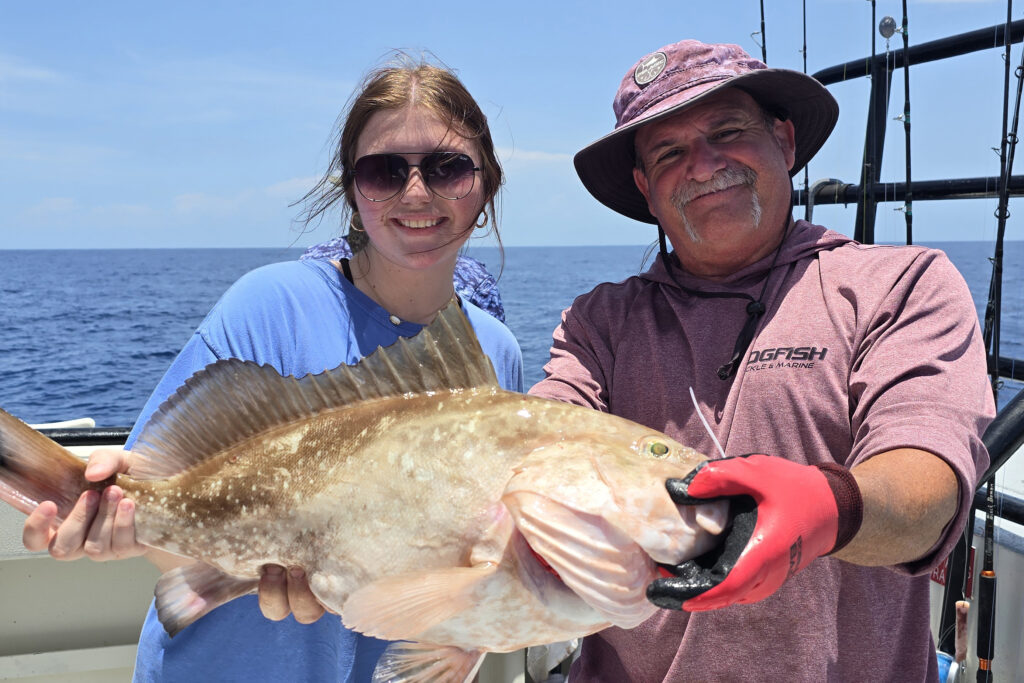
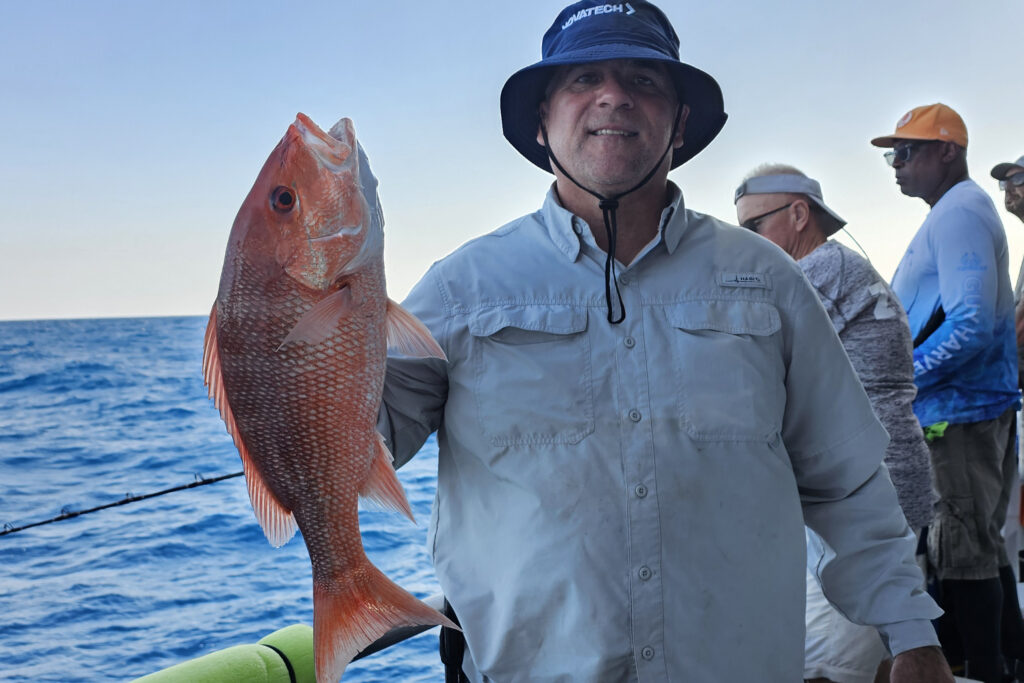
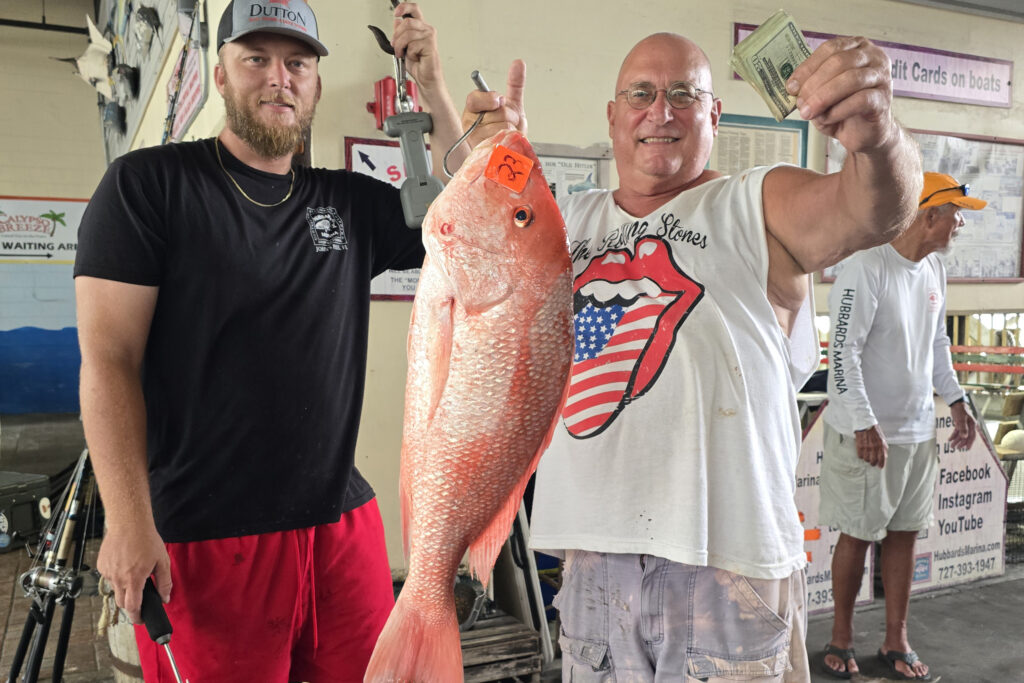
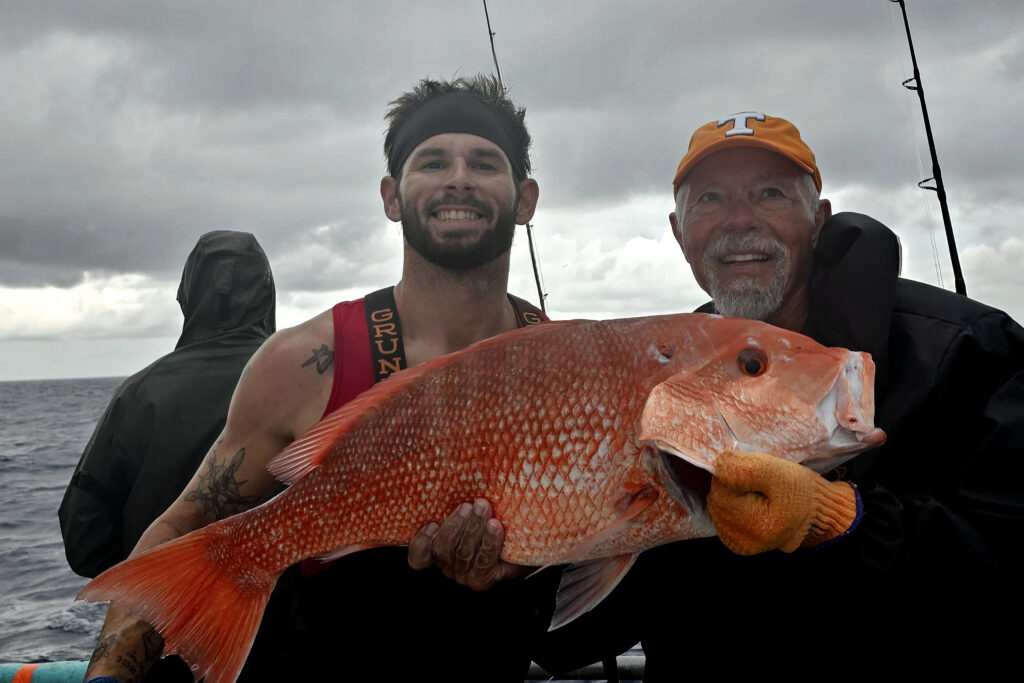
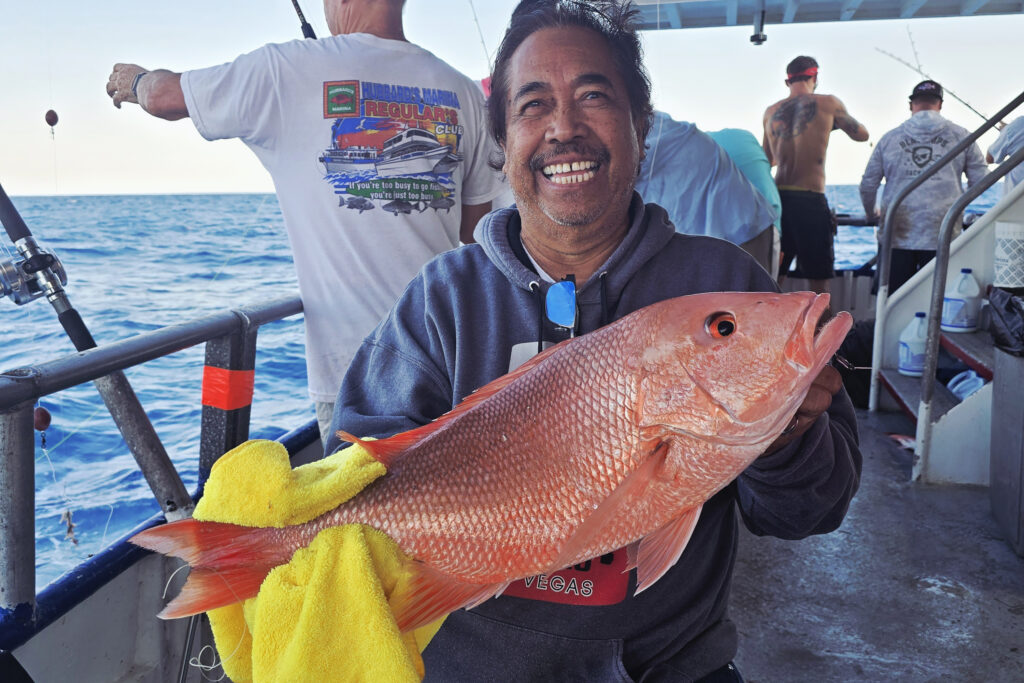
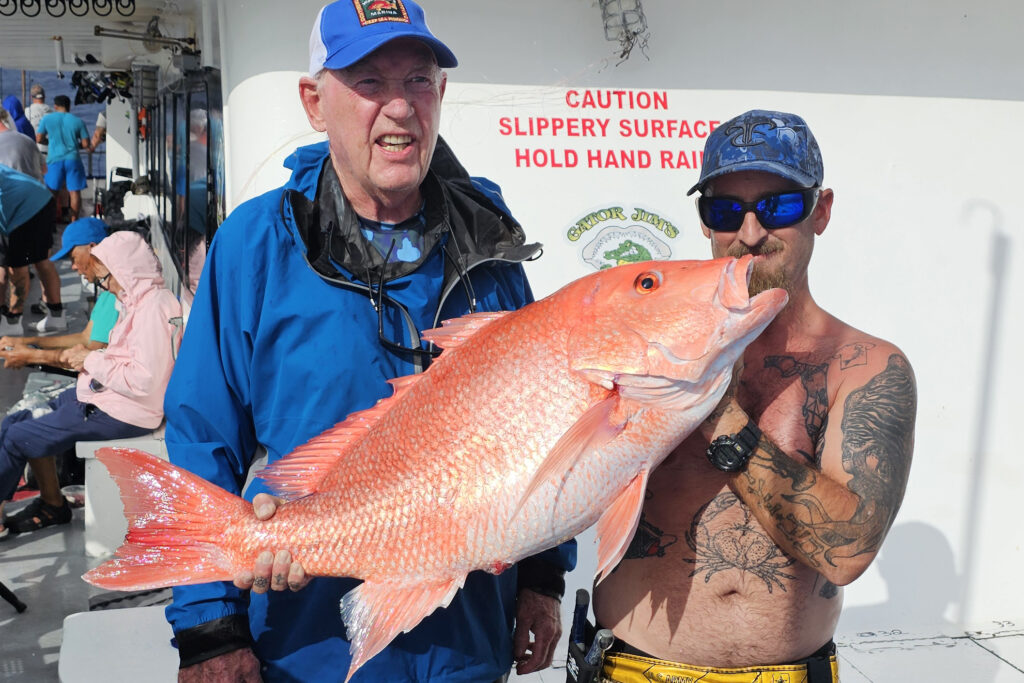
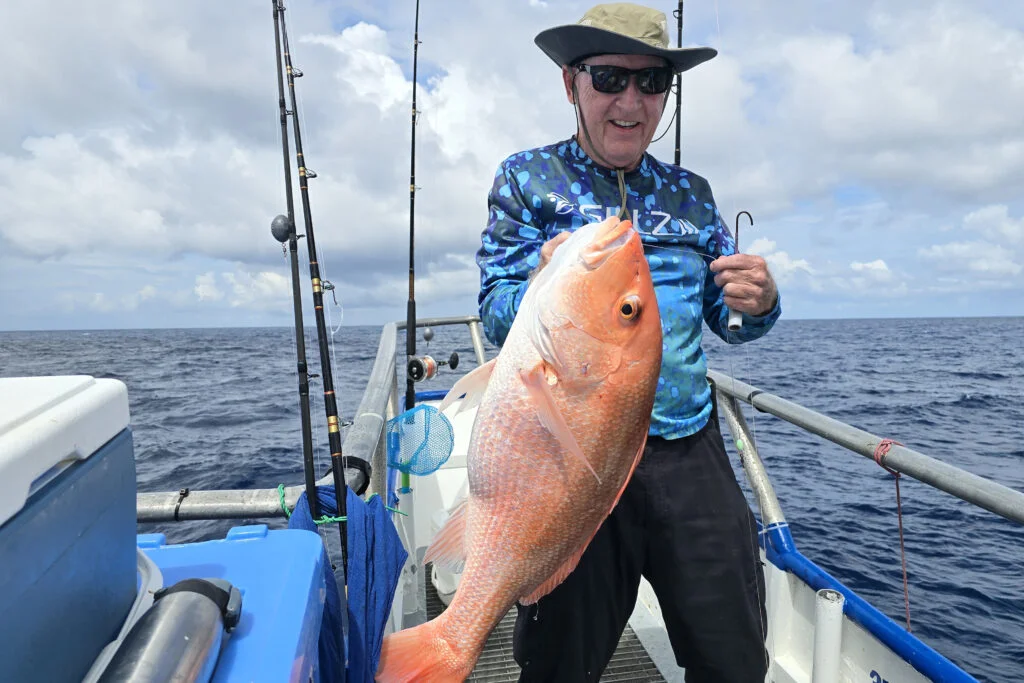
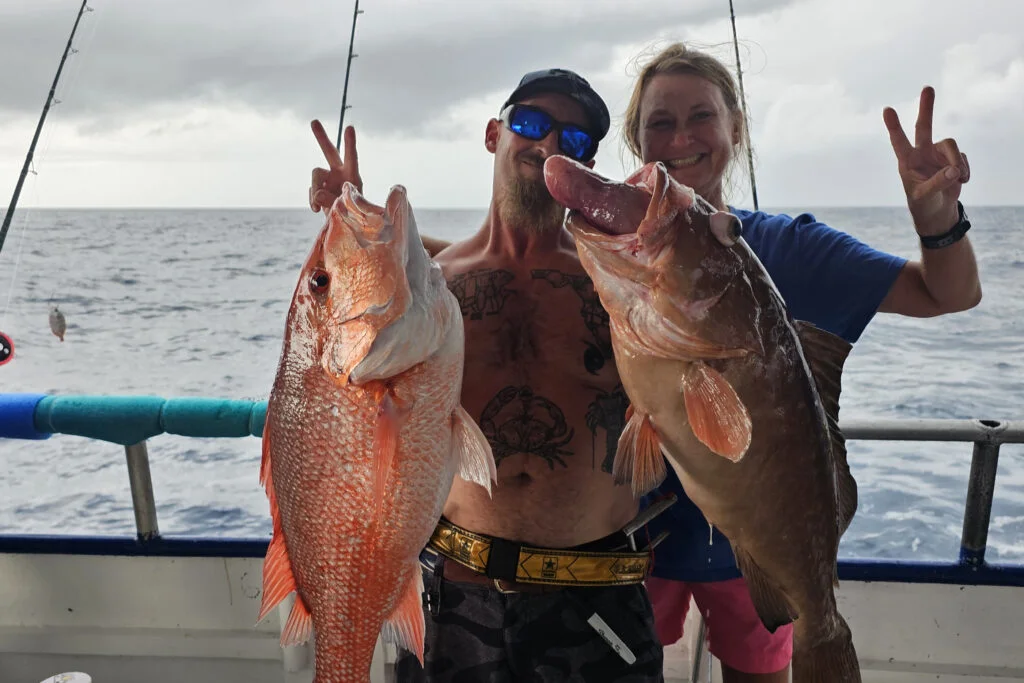
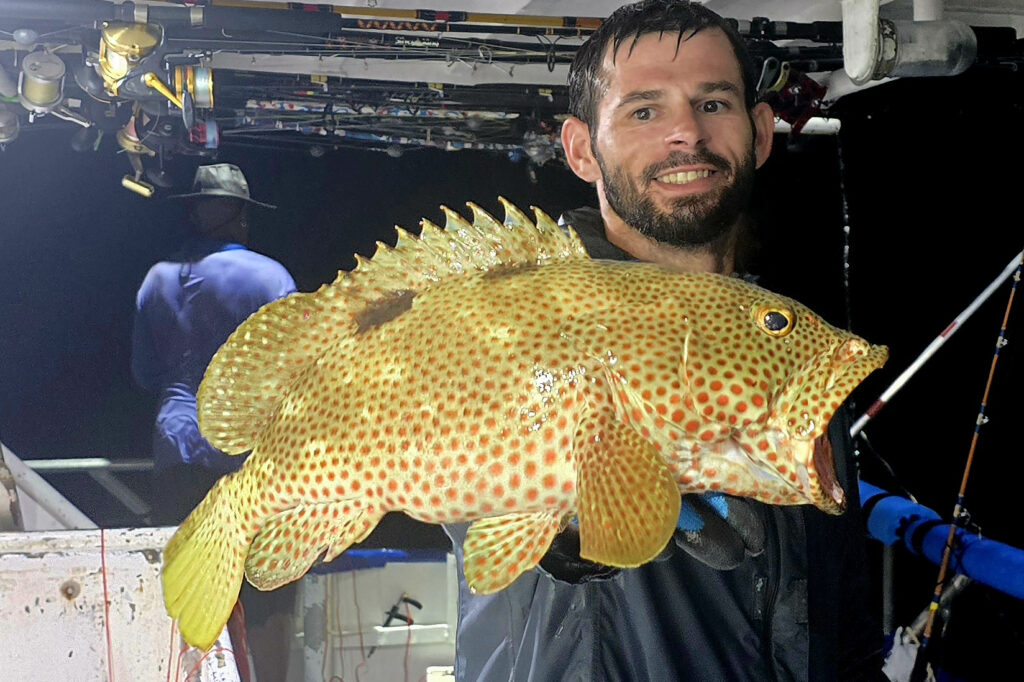
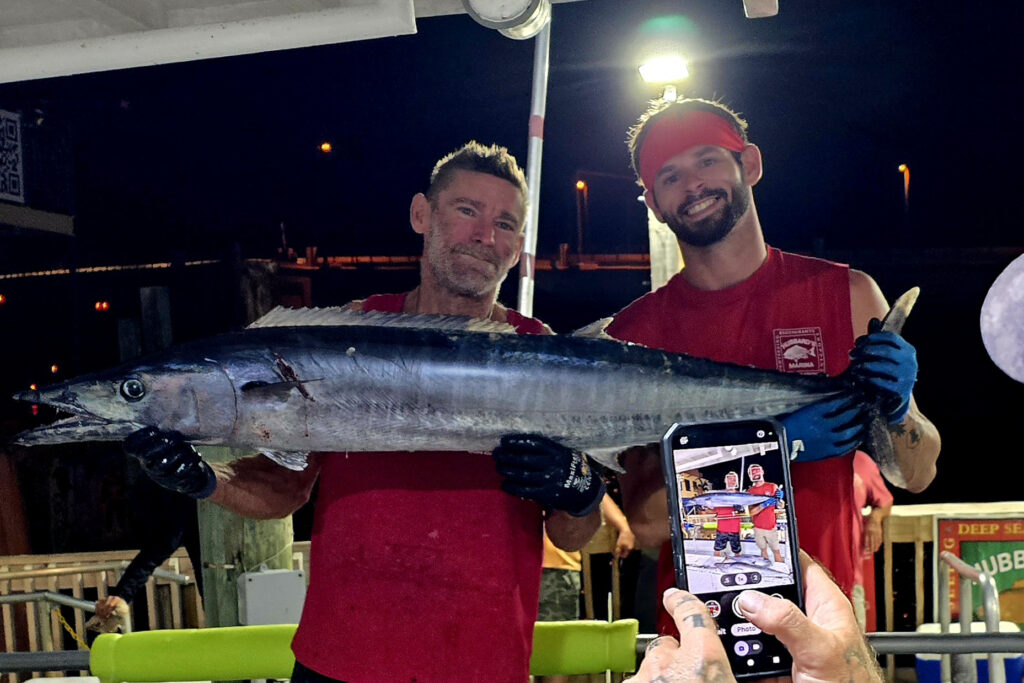
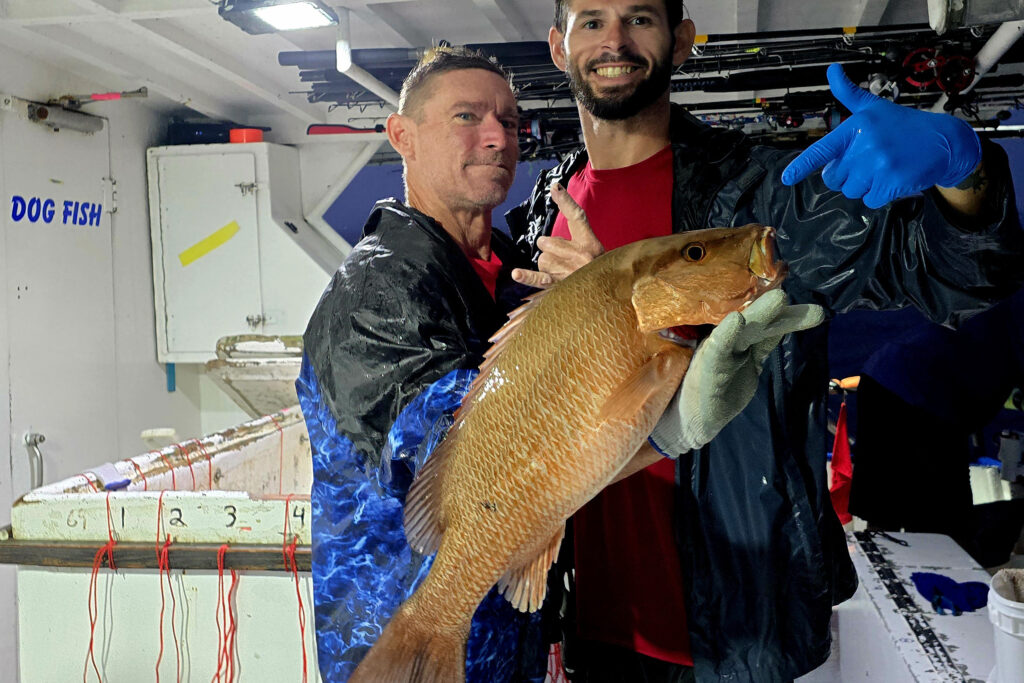
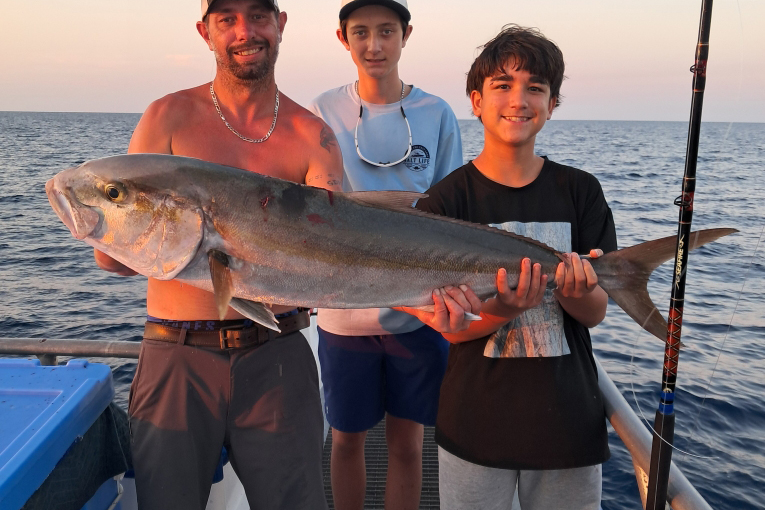
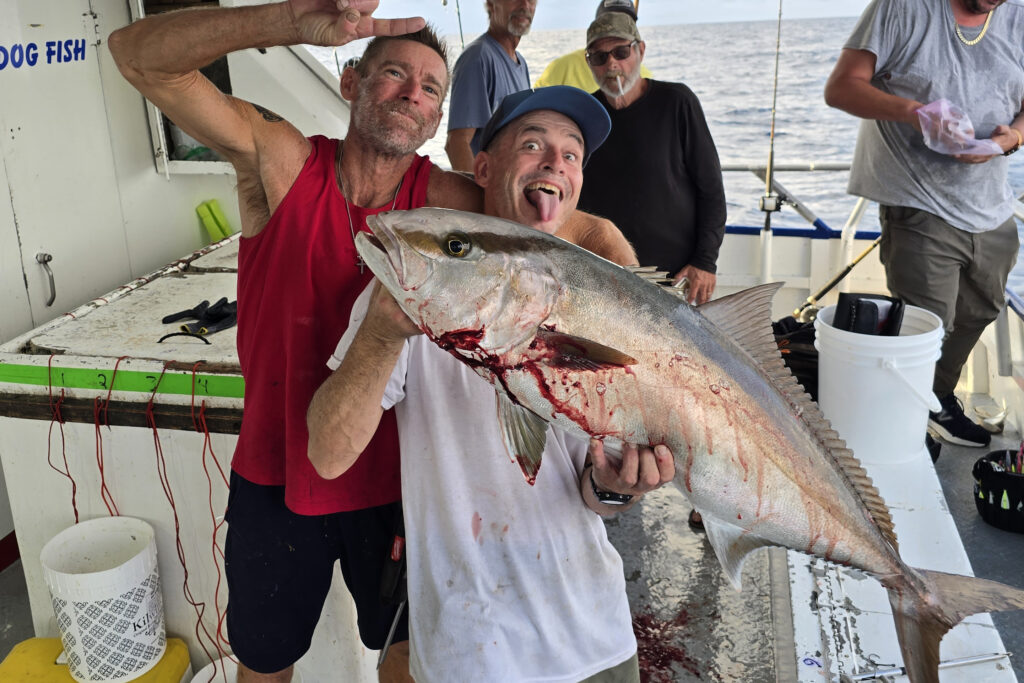
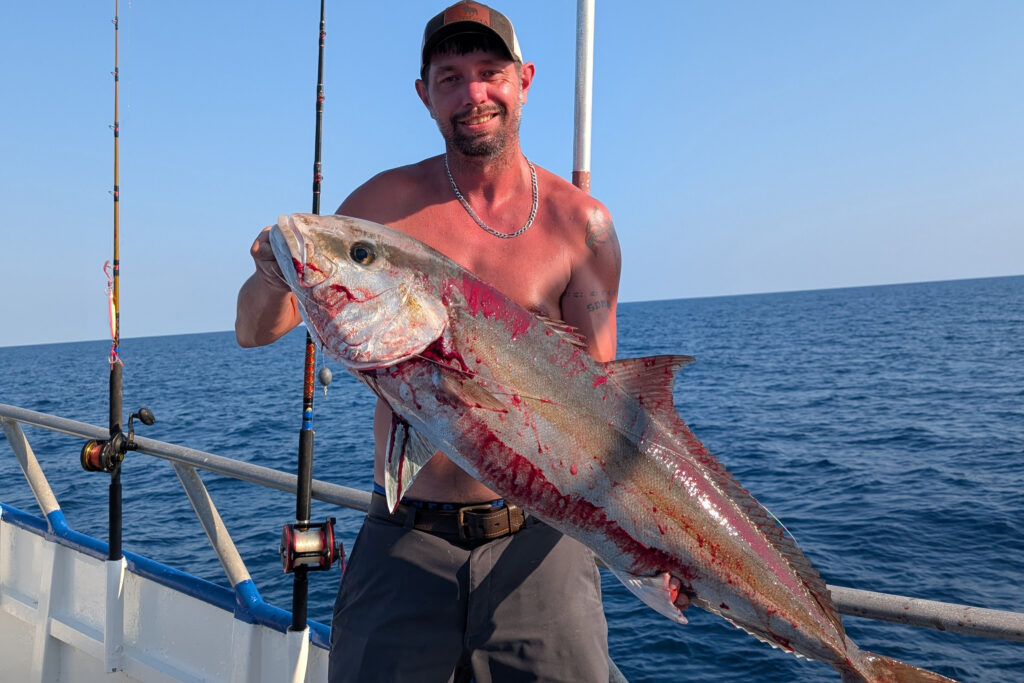
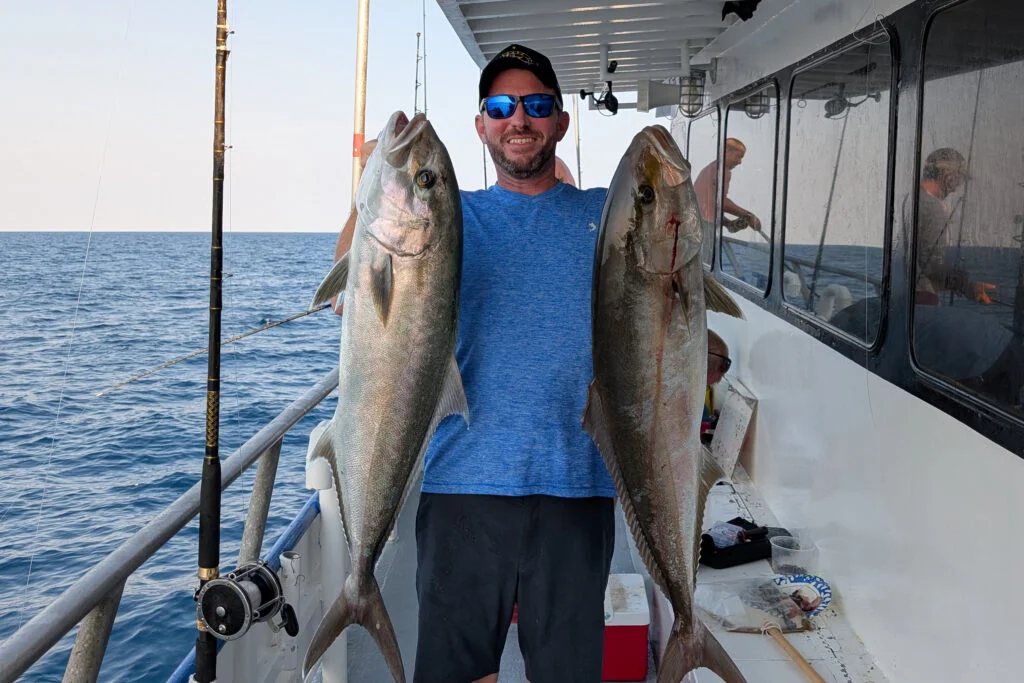
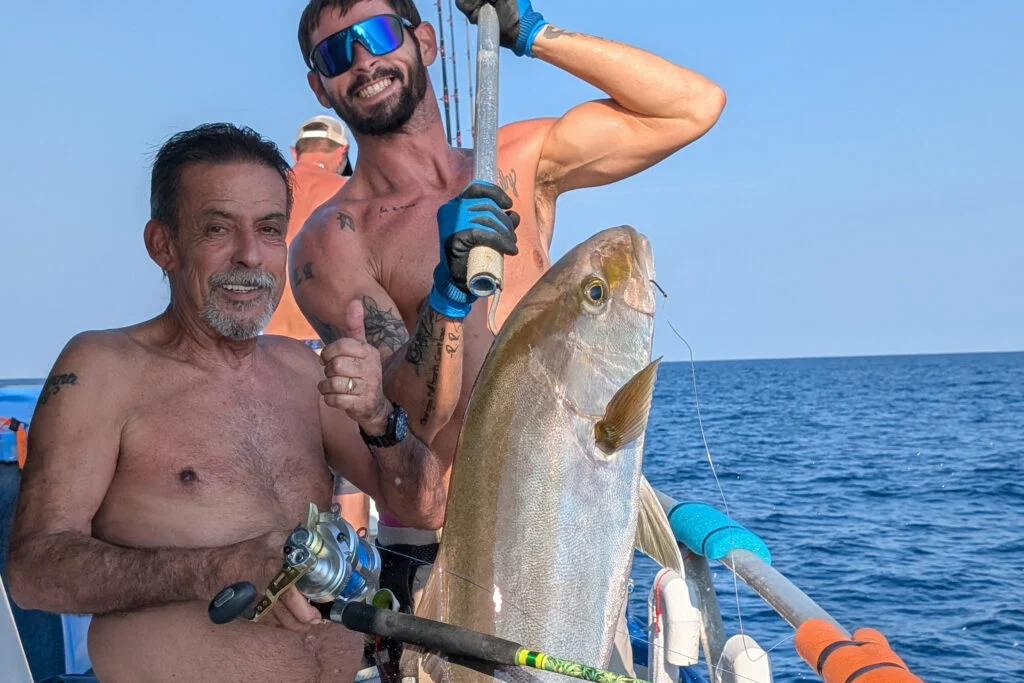
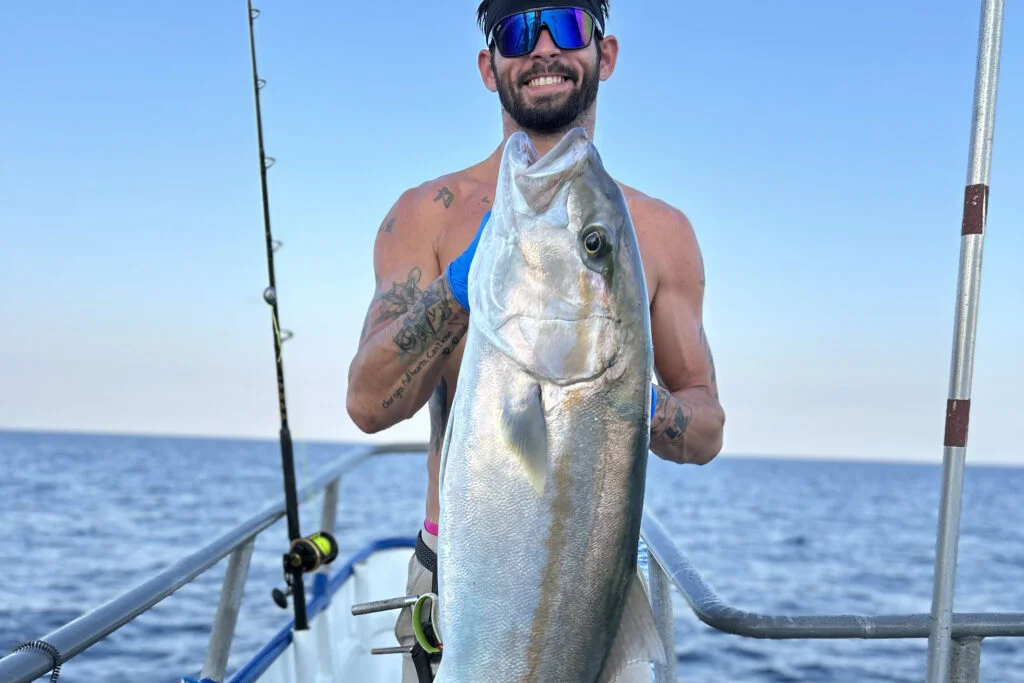
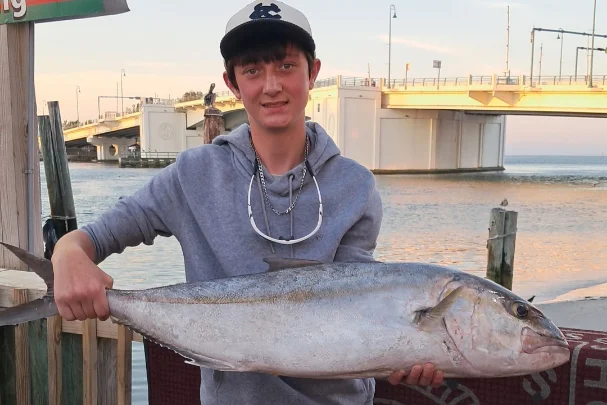
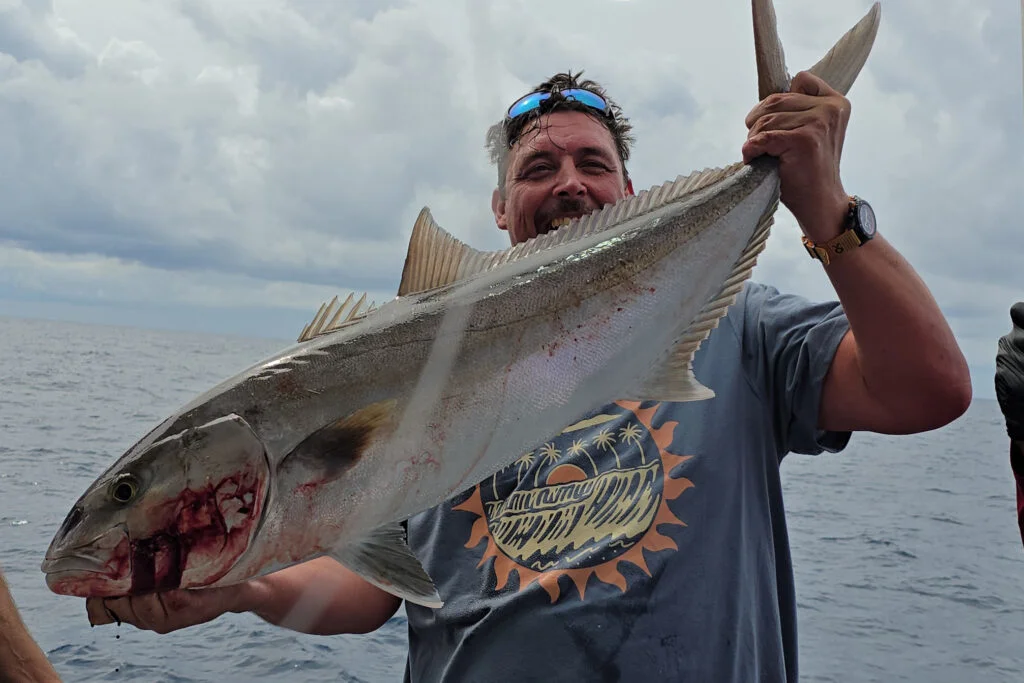
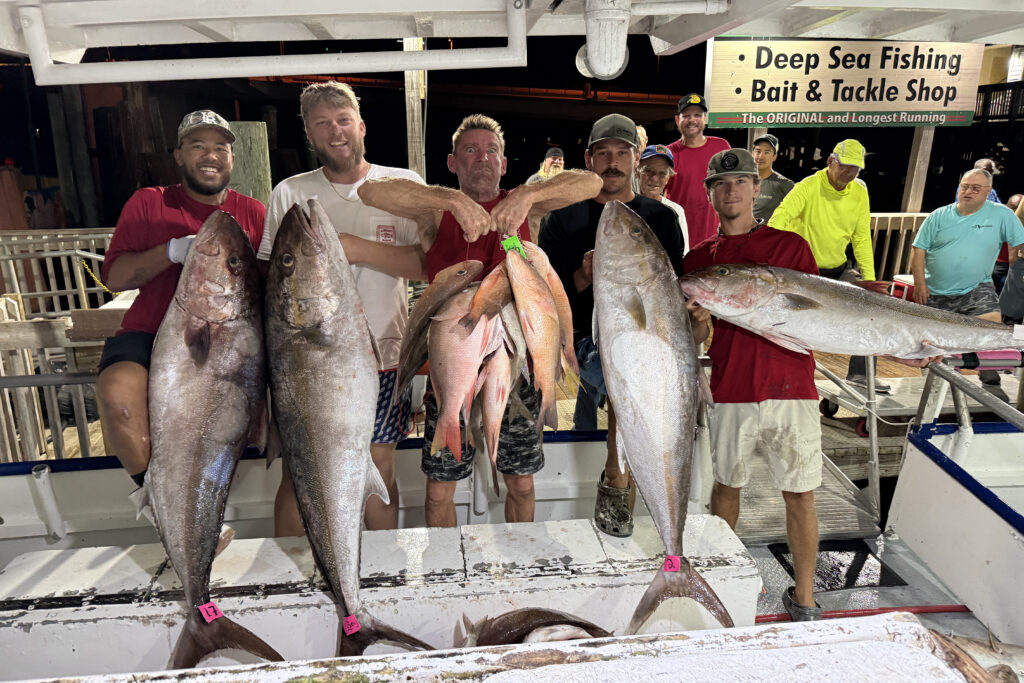
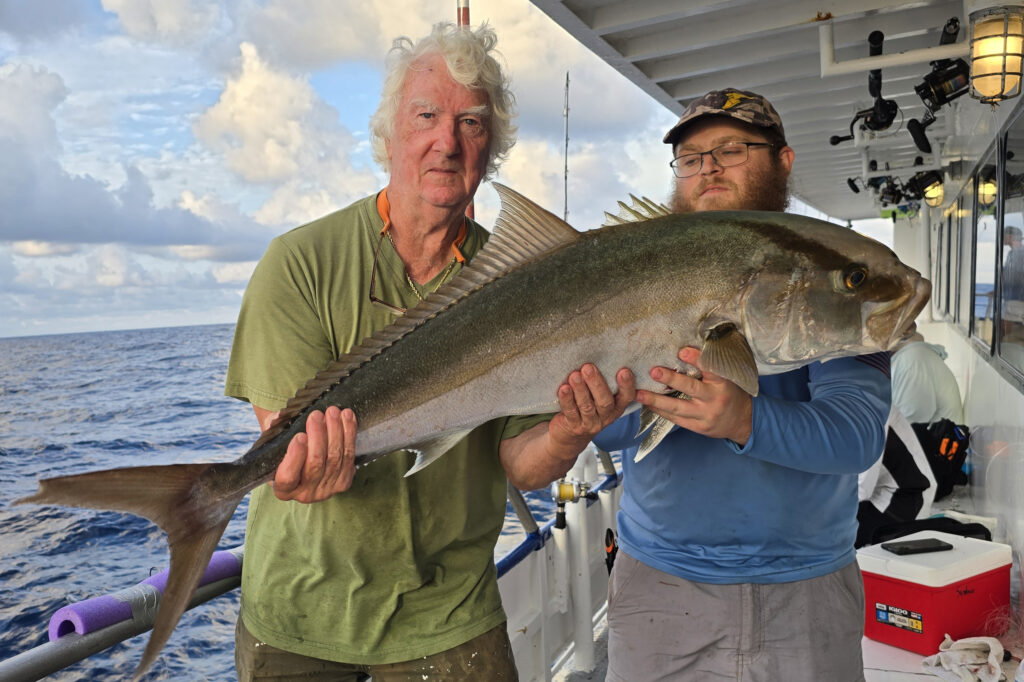
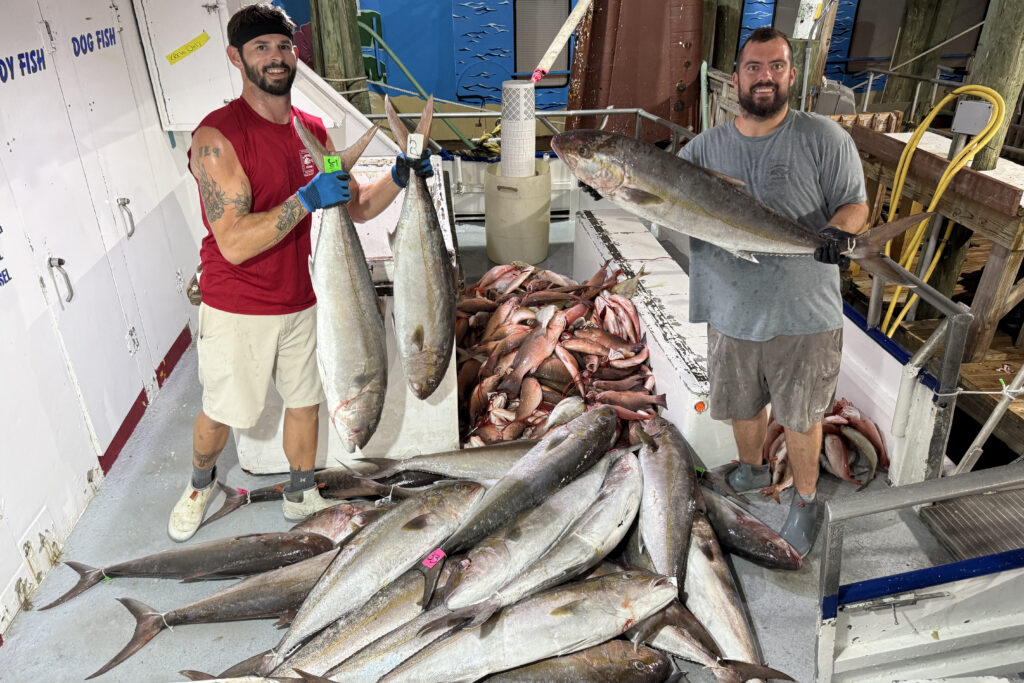
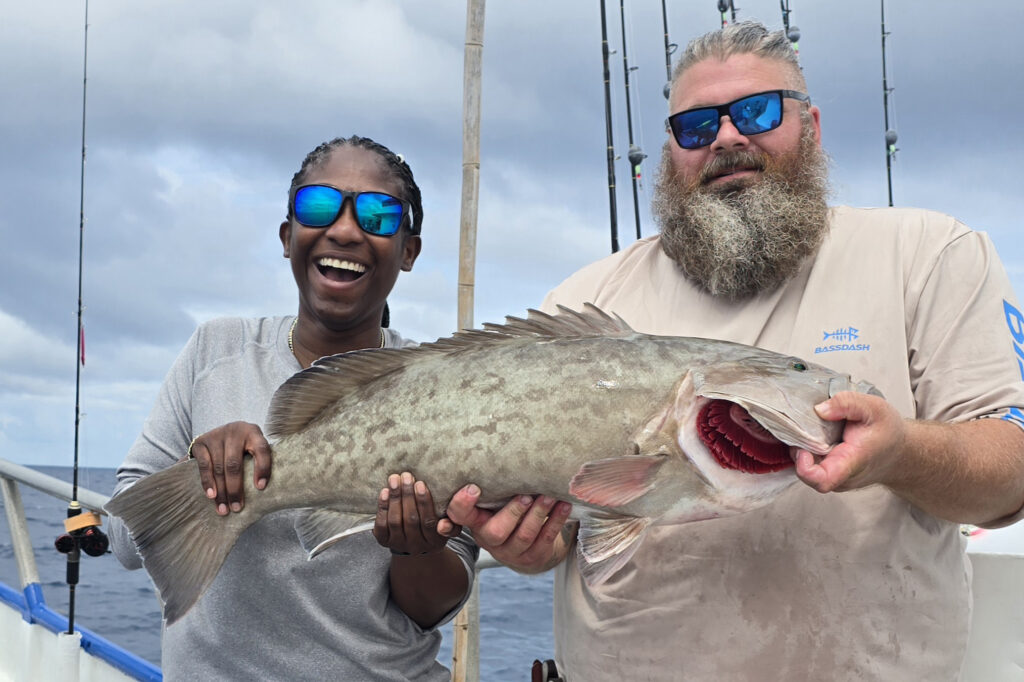
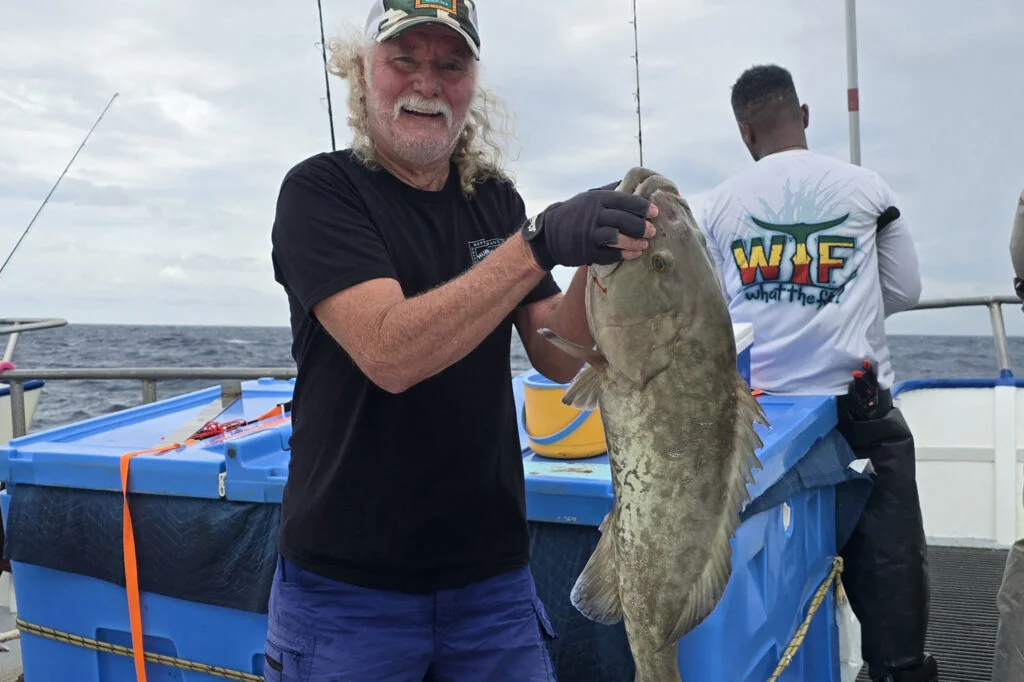
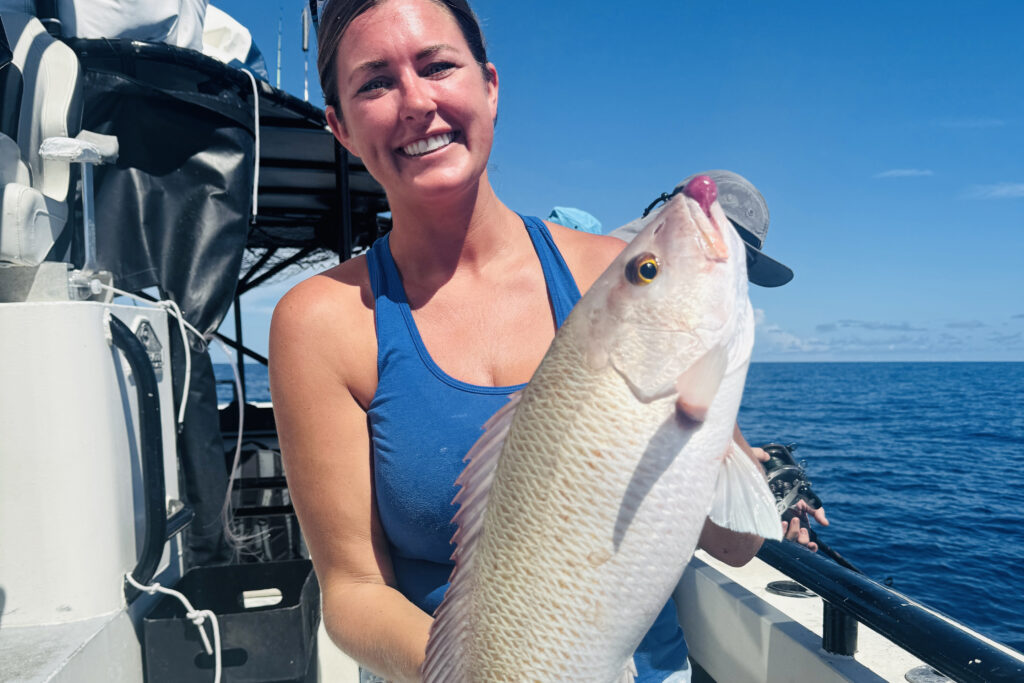
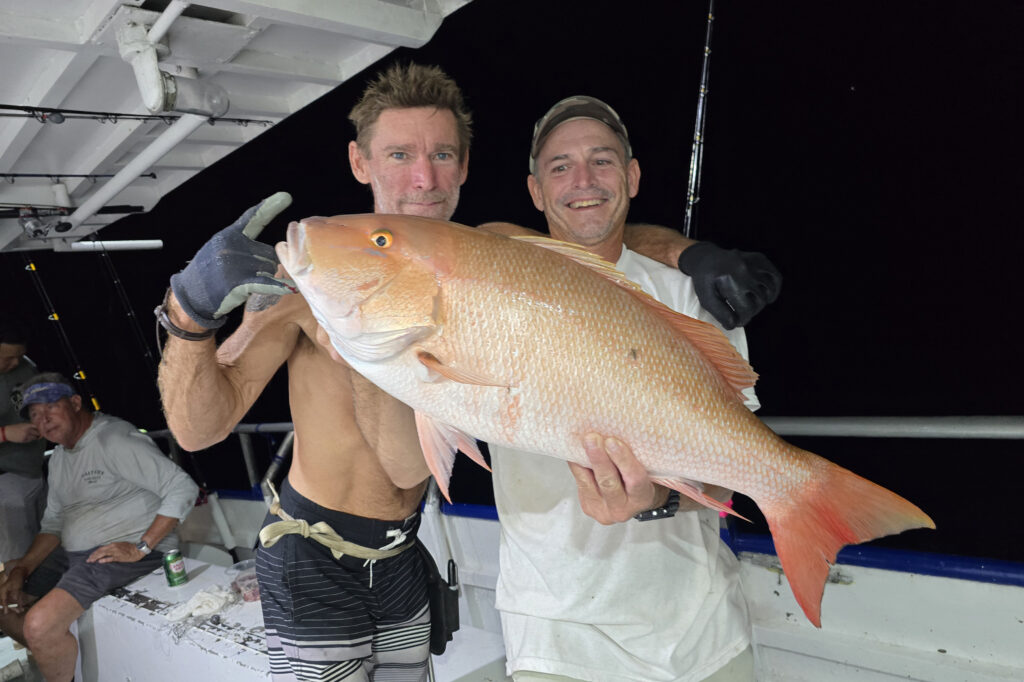
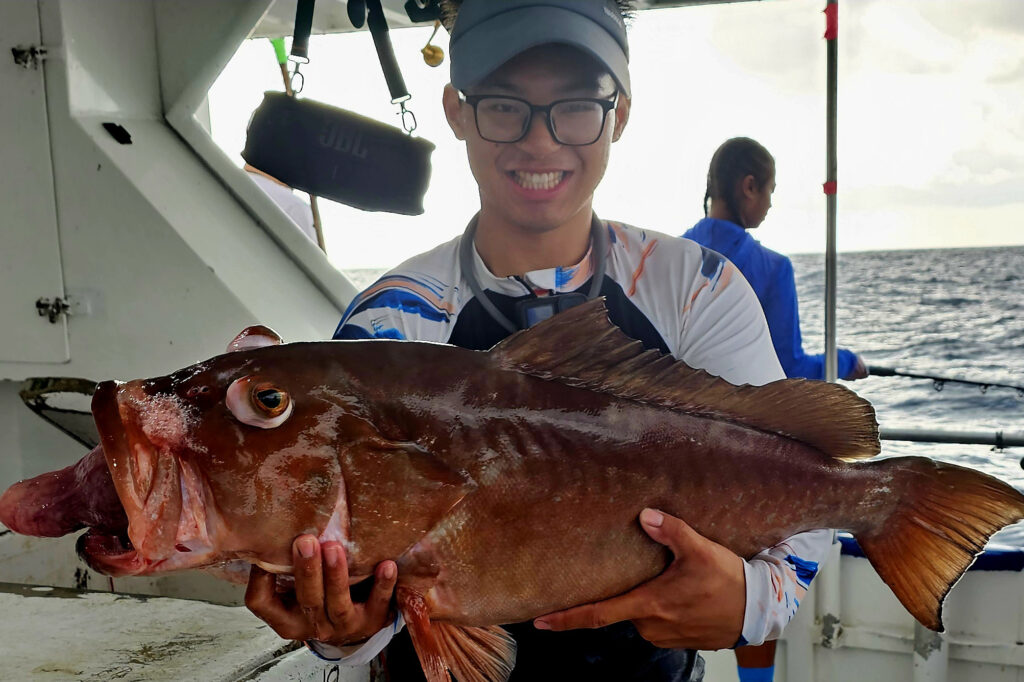
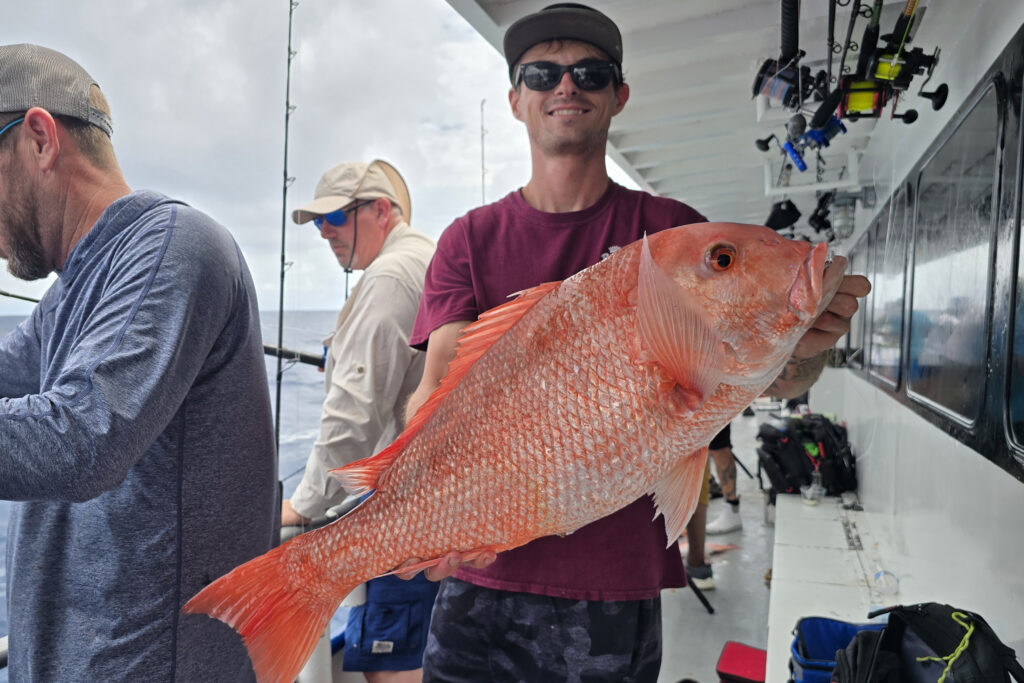
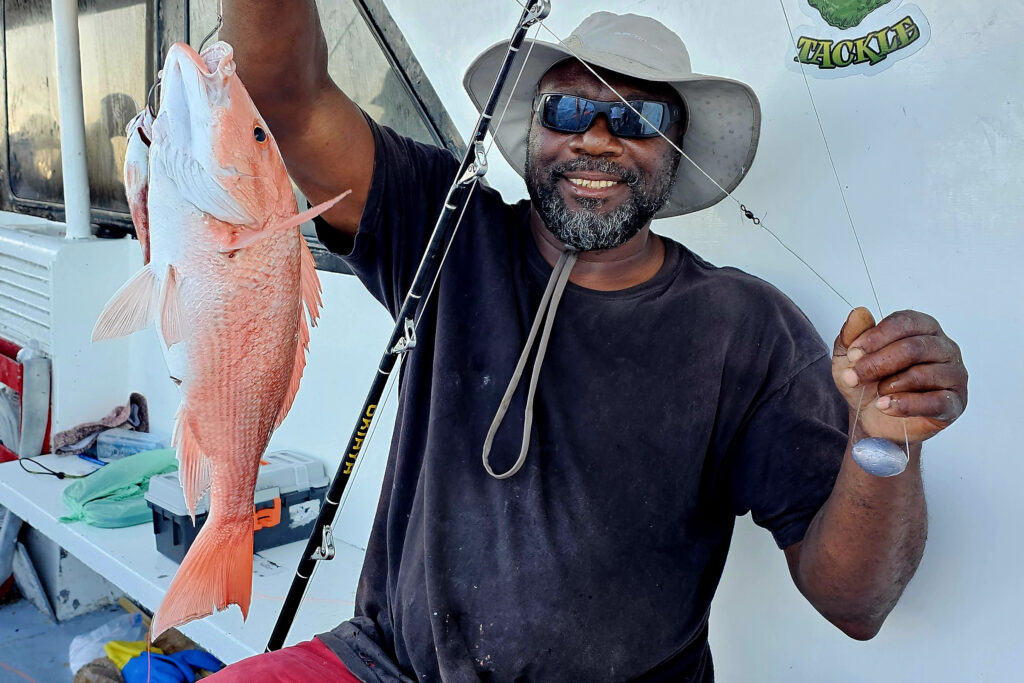
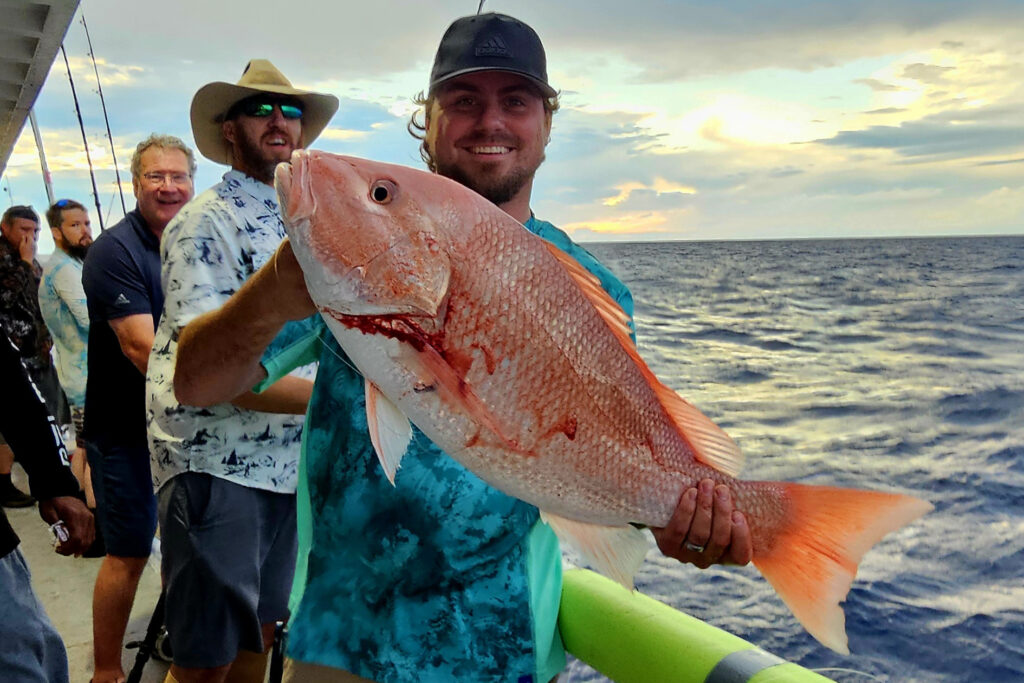
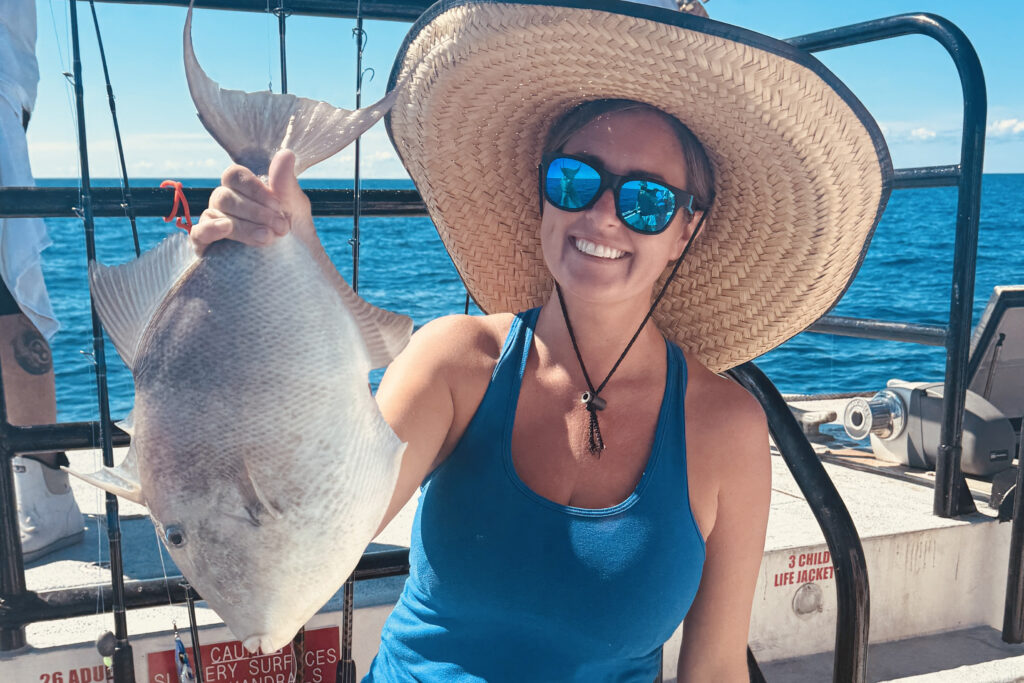
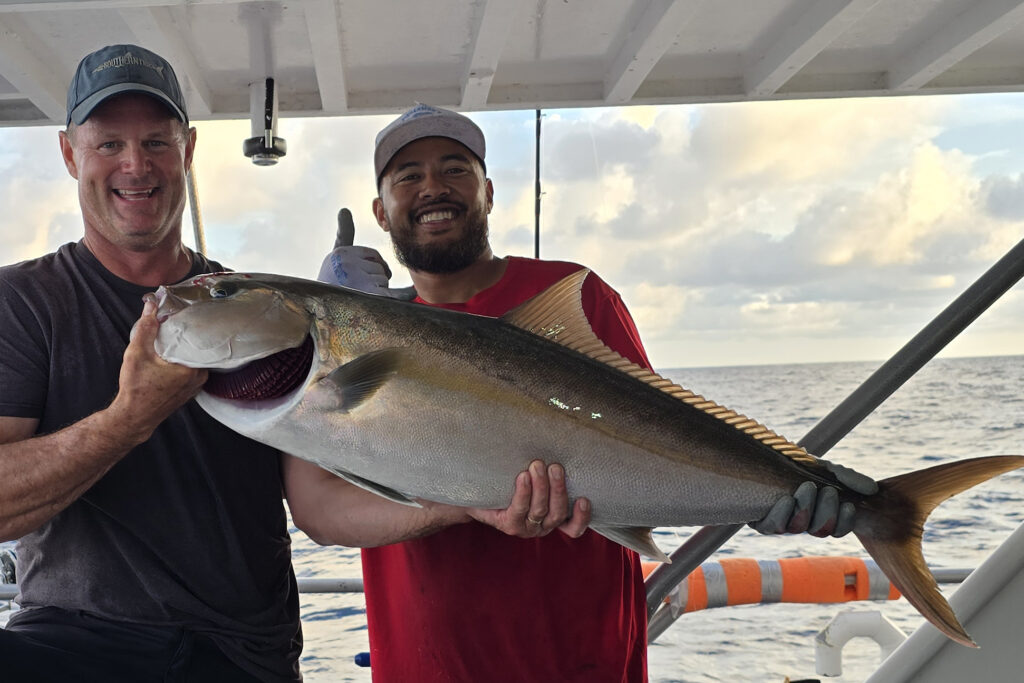
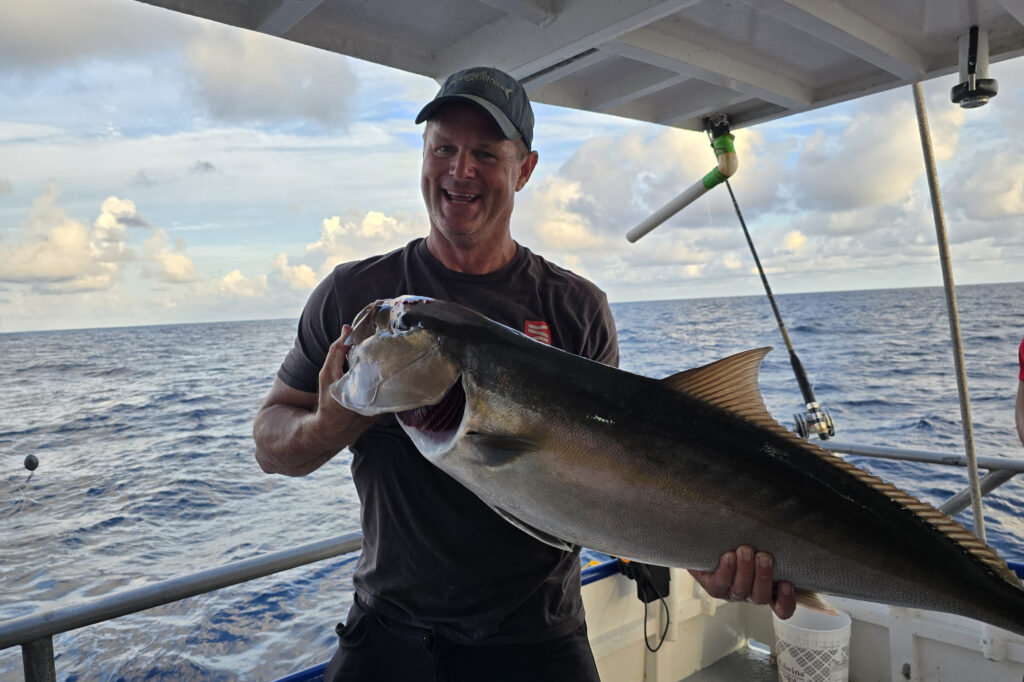
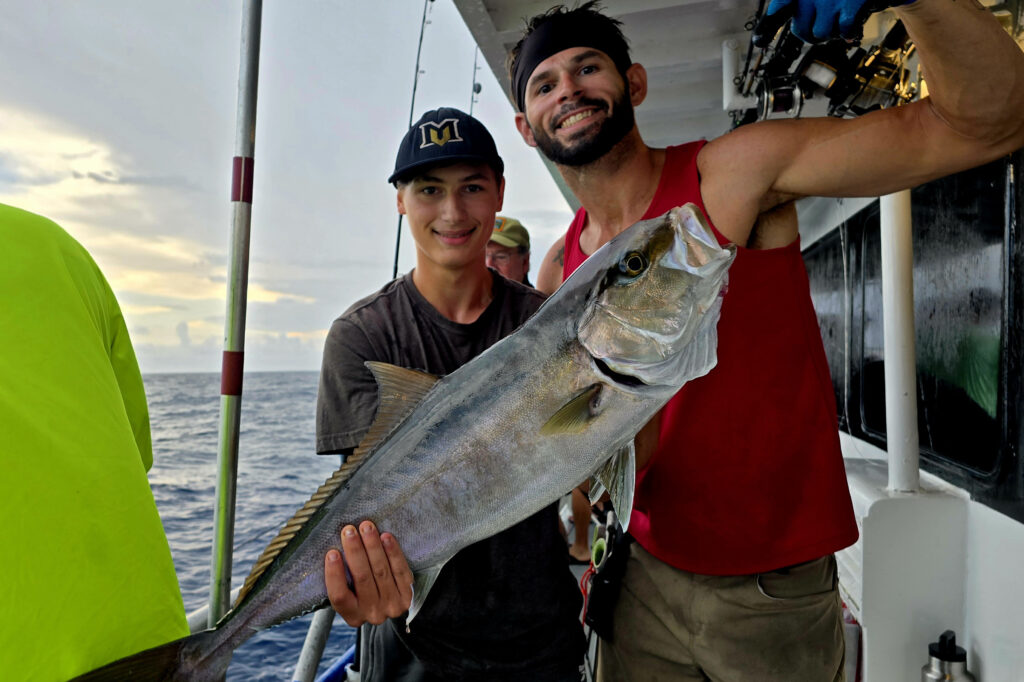
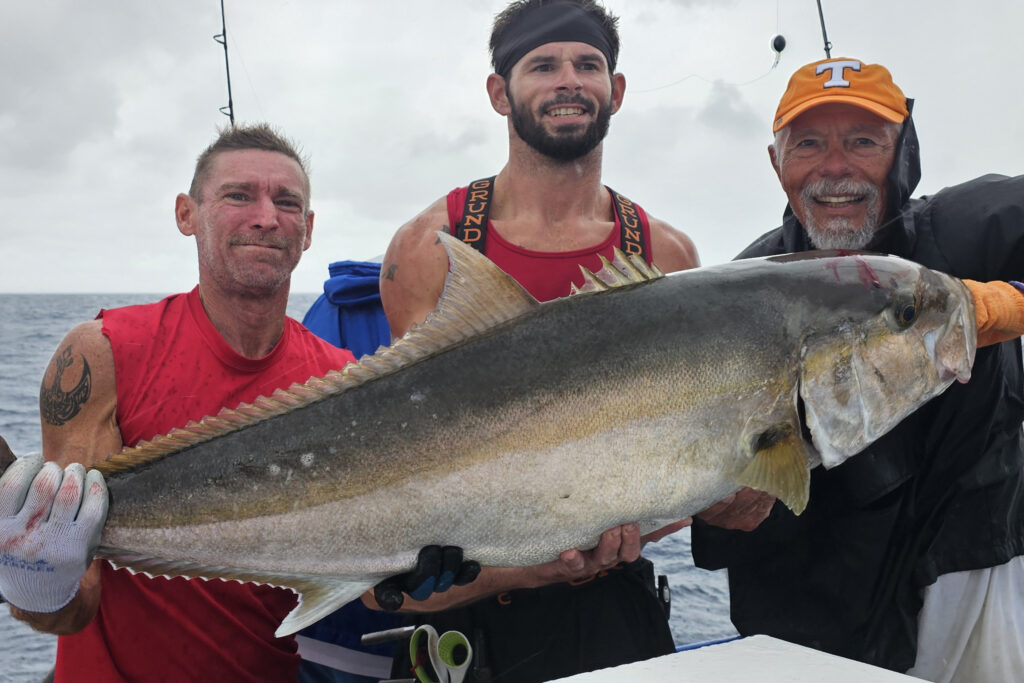
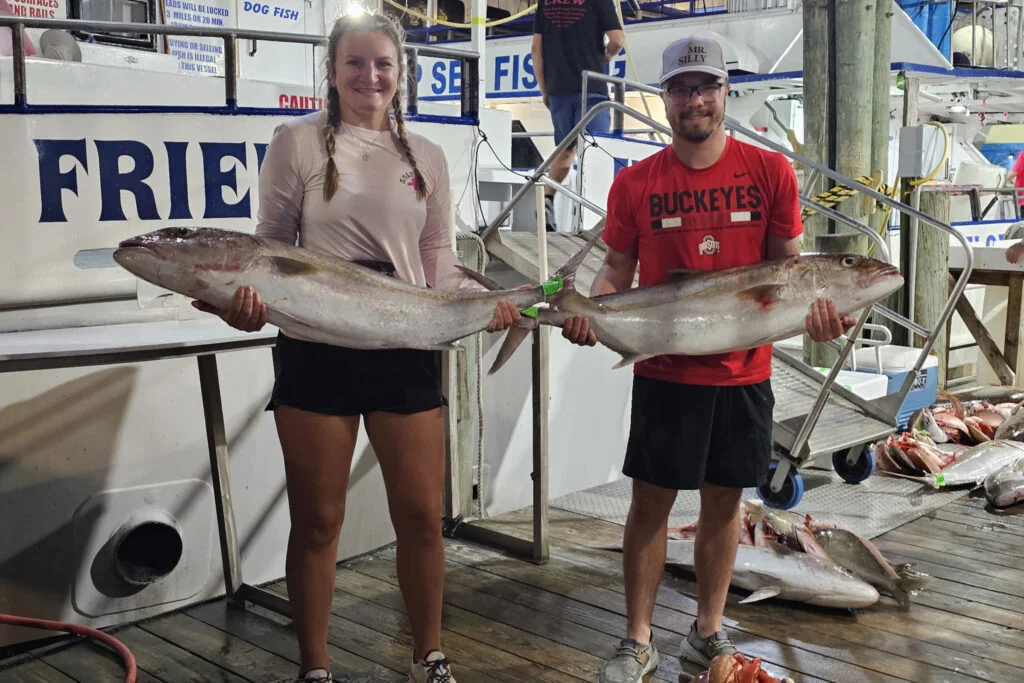
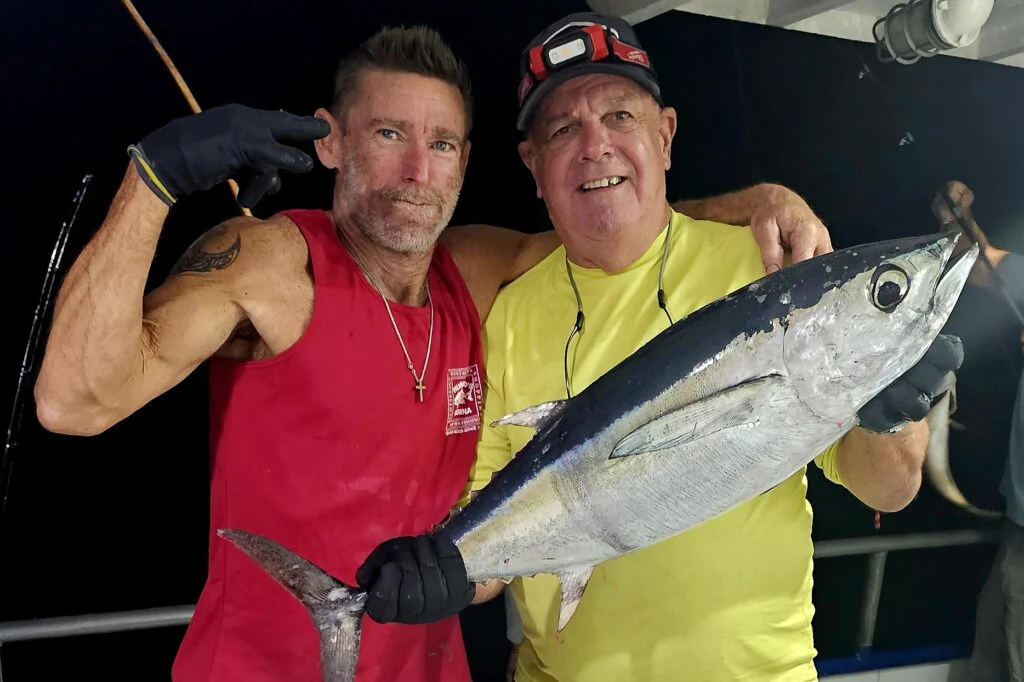
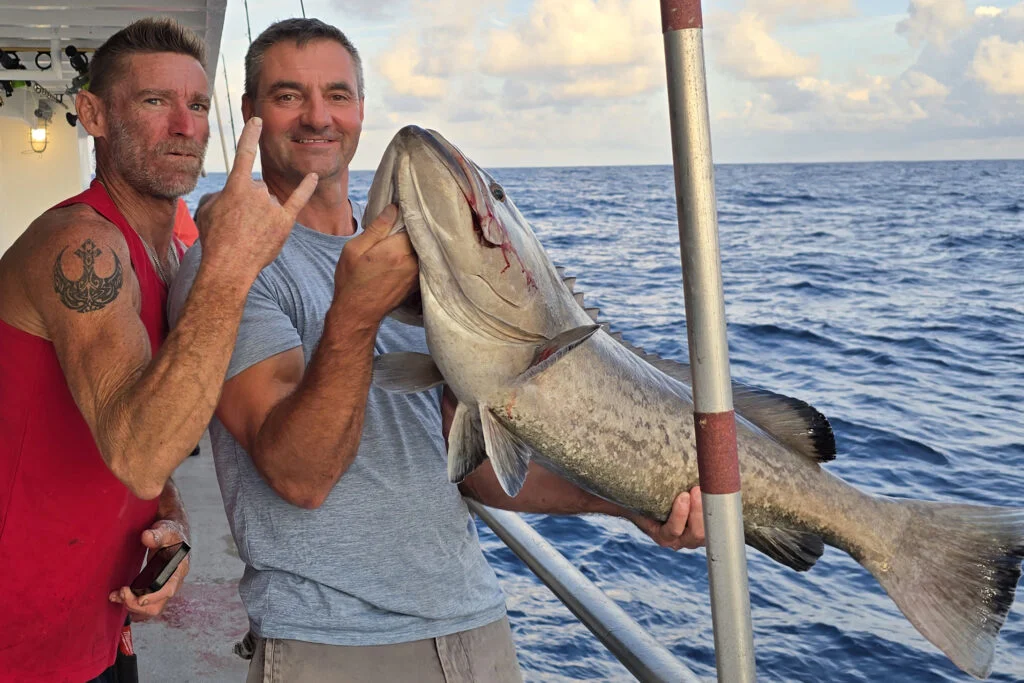
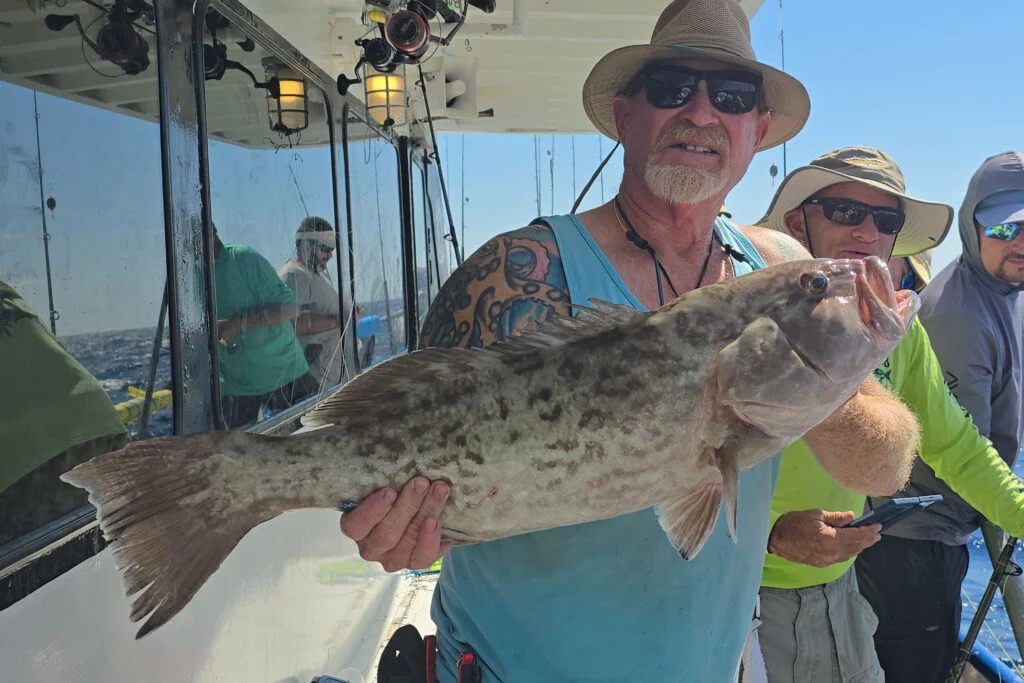
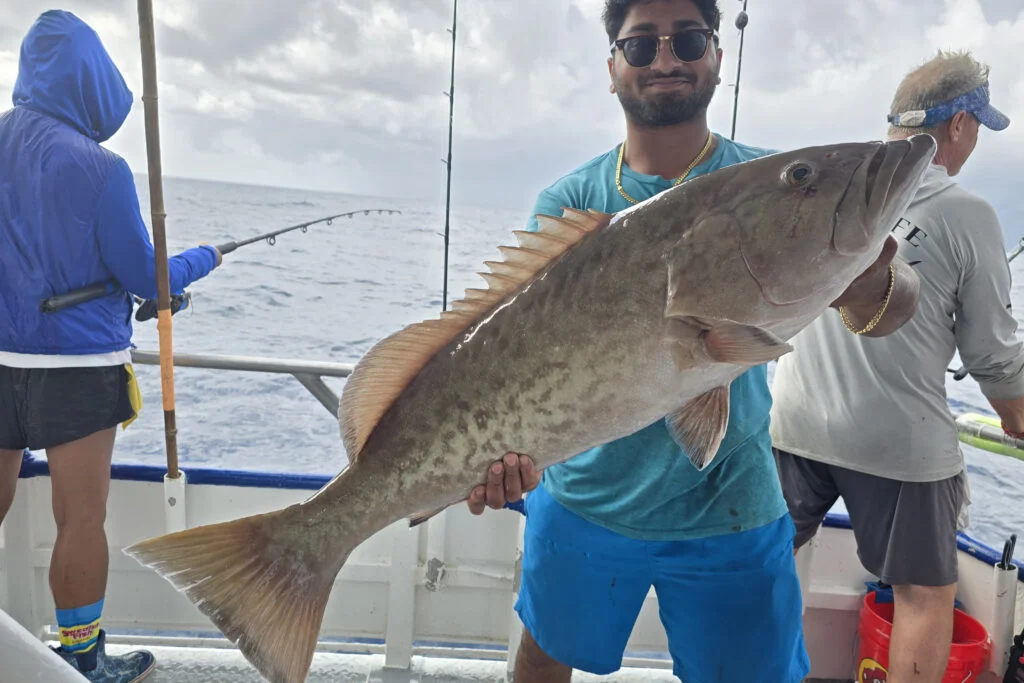
Offshore fishing has been lively, and we’re wrapping up the last day of amberjack season tonight. The bite has been solid, and those lucky enough to hop on one of our longer trips have had a great shot at bringing in these hard-fighting fish before the closure.
Beyond the amberjack action, red grouper and scamp grouper have been keeping rods bent for those working the deeper ledges and hard bottom. We’ve also been seeing consistent catches of mangrove snapper, with mutton and yellowtail mixed in to round out the box. Schools of porgies and vermillion snapper have added to the steady action, along with the occasional almaco jack to keep things interesting.
On top of the bottom bite, the pelagic scene has been exciting. Wahoo, tuna, and mahi have all been making appearances offshore, giving anglers a real shot at those big-water thrills while trolling or freelining baits. With cooler weather pushing in and water temps starting to shift, we expect these pelagic opportunities to stick around and even improve as we move deeper into the season.
Overall, it’s a great time to head offshore with Hubbard’s Marina to take advantage of the variety and quality of fish biting right now and plenty of fish able to be kept.
Don’t forget, that we have some great videos on our fishing tips and tricks page here to show you how to target and rig for almost any species-> https://www.hubbardsmarina.com/fishing-tips/
Remember that when fishing in deeper nearshore and offshore federal waters, the Descend Act requires you to have a descending device or venting tool “rigged and ready.” If you know how to use a venting tool, keep it prepared. If not, here’s some helpful advice: https://bit.ly/3L5HTnv. Using a descending device is straightforward and doesn’t require as much precision or practice as venting. Return em’ Right has a training course only takes about 10-15 minutes, and you can learn valuable techniques to protect our offshore fishery. Spread the word by visiting: https://returnemright.org/.
TERMS OF REFERENCE-
Inshore: This covers the areas from the inner bays, through the bridges, and right up to the beaches.
Near Shore: This includes the coastal waters from the beaches up to twenty miles offshore, or up to a depth of 100 feet.
Offshore: This extends from twenty miles offshore or from a depth of 100 feet and beyond.
For more fishing reports, photos, videos, and other content, check out Hubbard’s Marina on Facebook, Instagram, YouTube, TikTok, Twitter, Pinterest, or Snapchat by searching for @HubbardsMarina. Remember our family motto: “If you’re too busy to go fishing, you’re just too busy!” Thank you for reading our report.
Capt. Dylan Hubbard, Hubbard’s Marina
Phone or text: (727) 393-1947
Website: Hubbard’s Marina
If you’re not seeing the latest article, try clearing your browser cache.
You can search “how to clear browser cache” on Google for quick steps.

